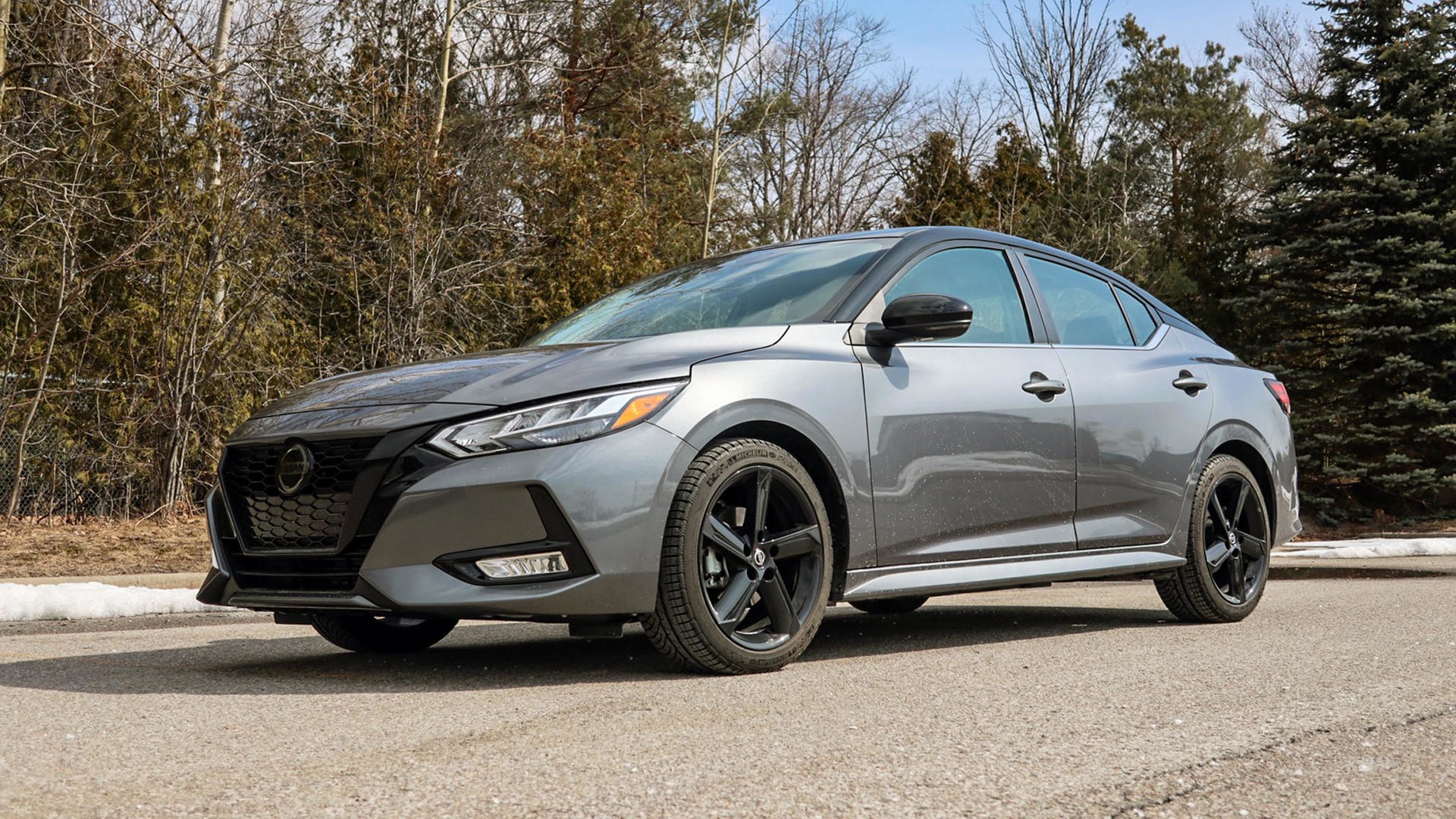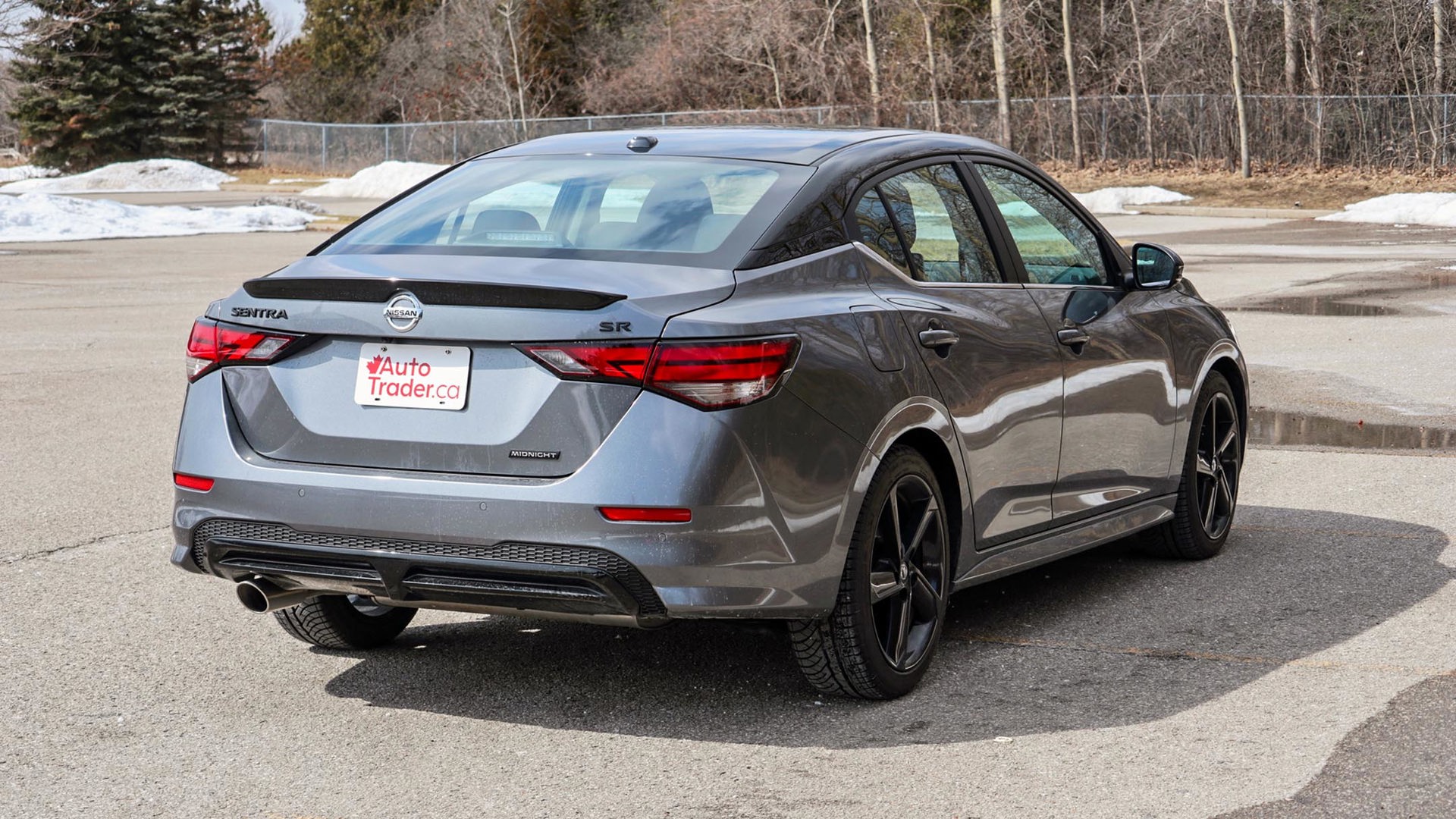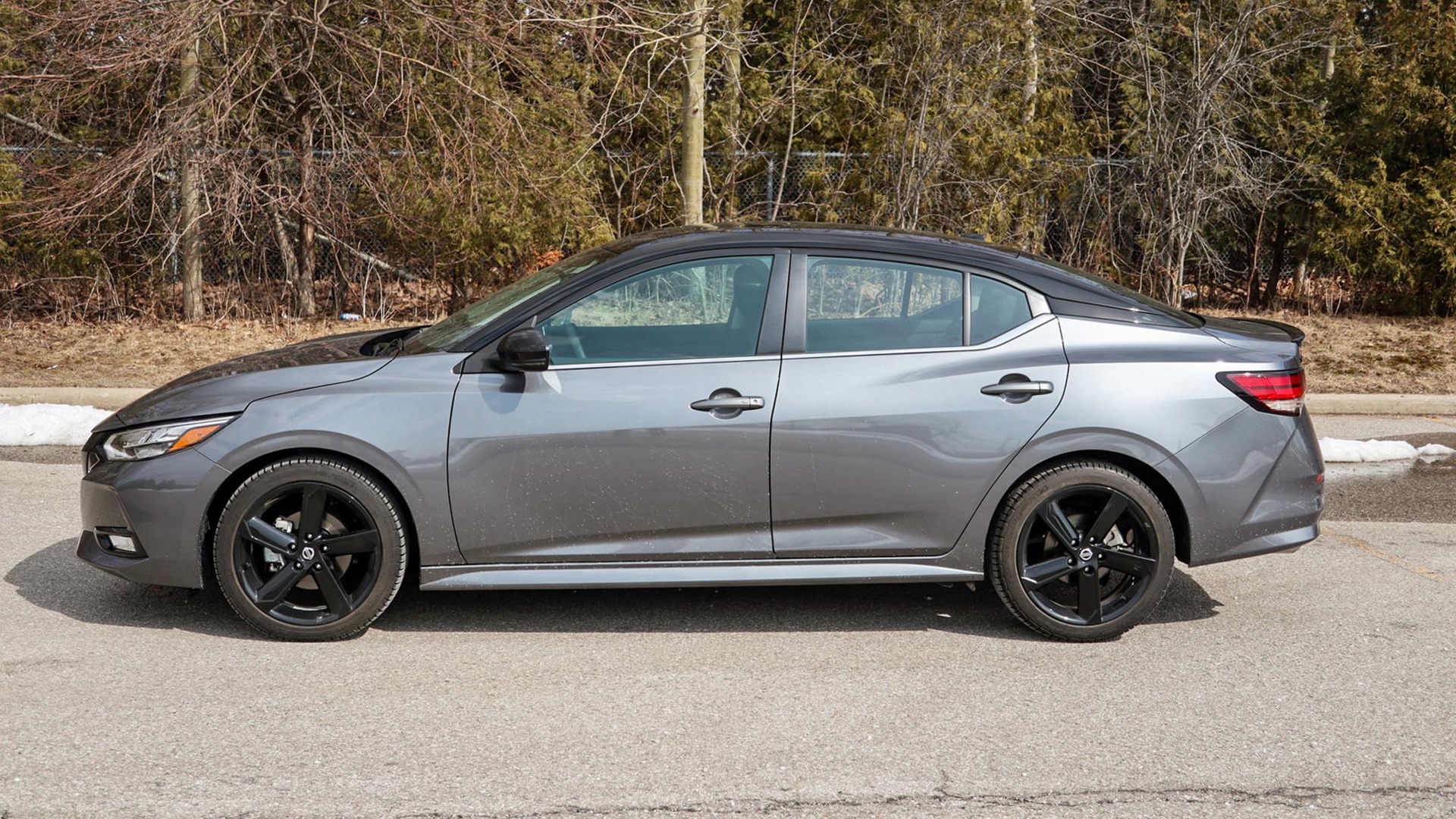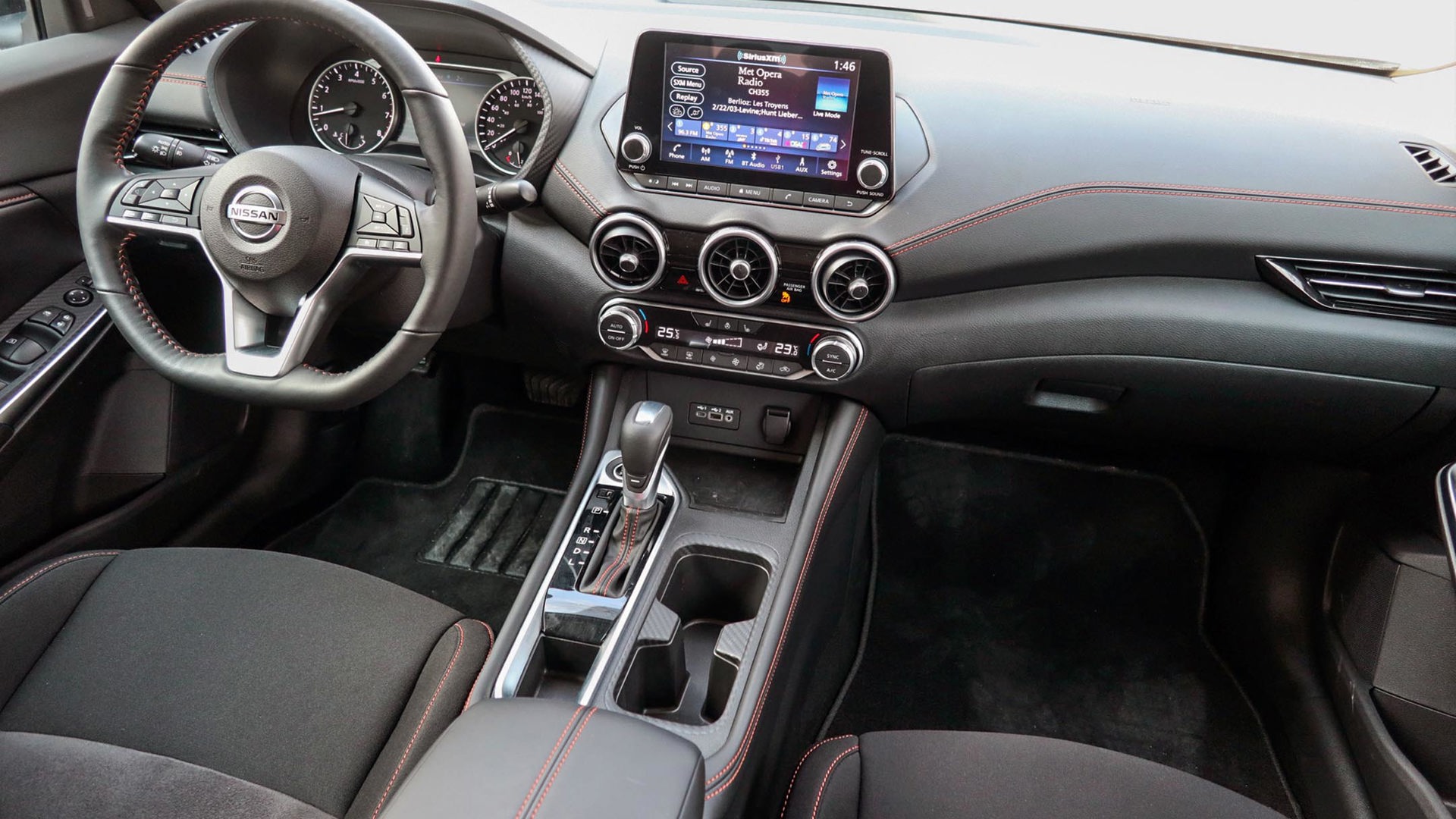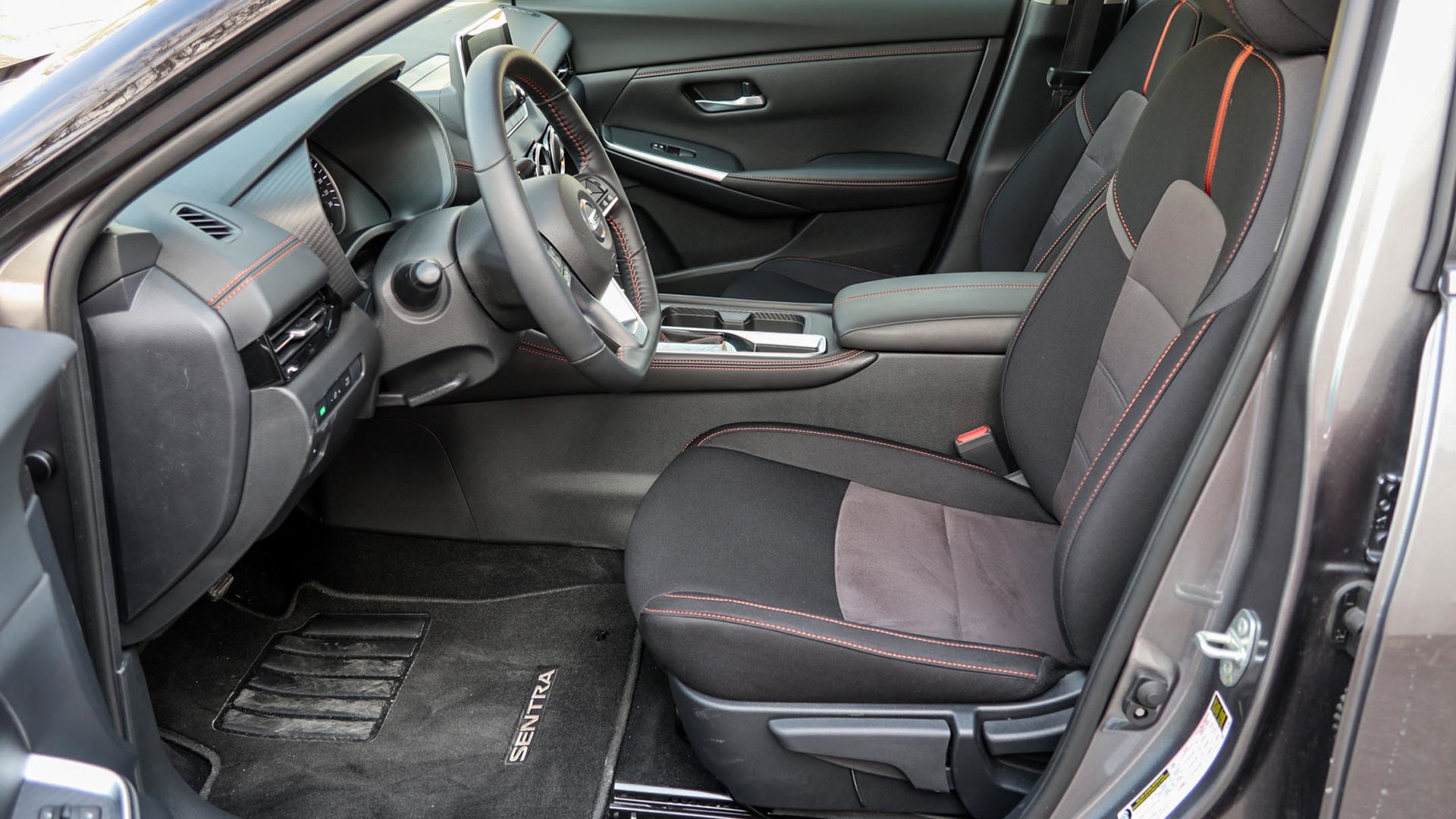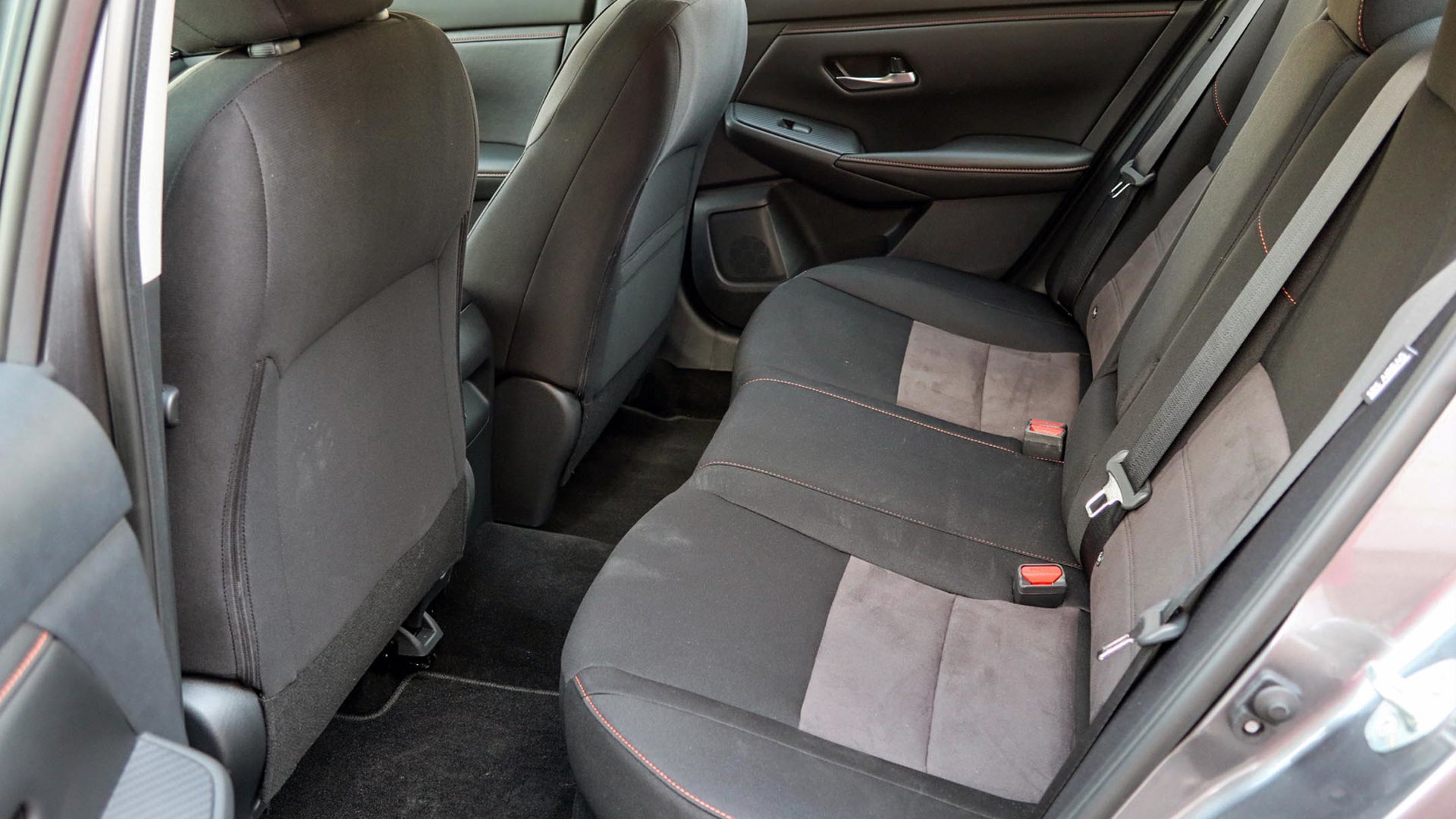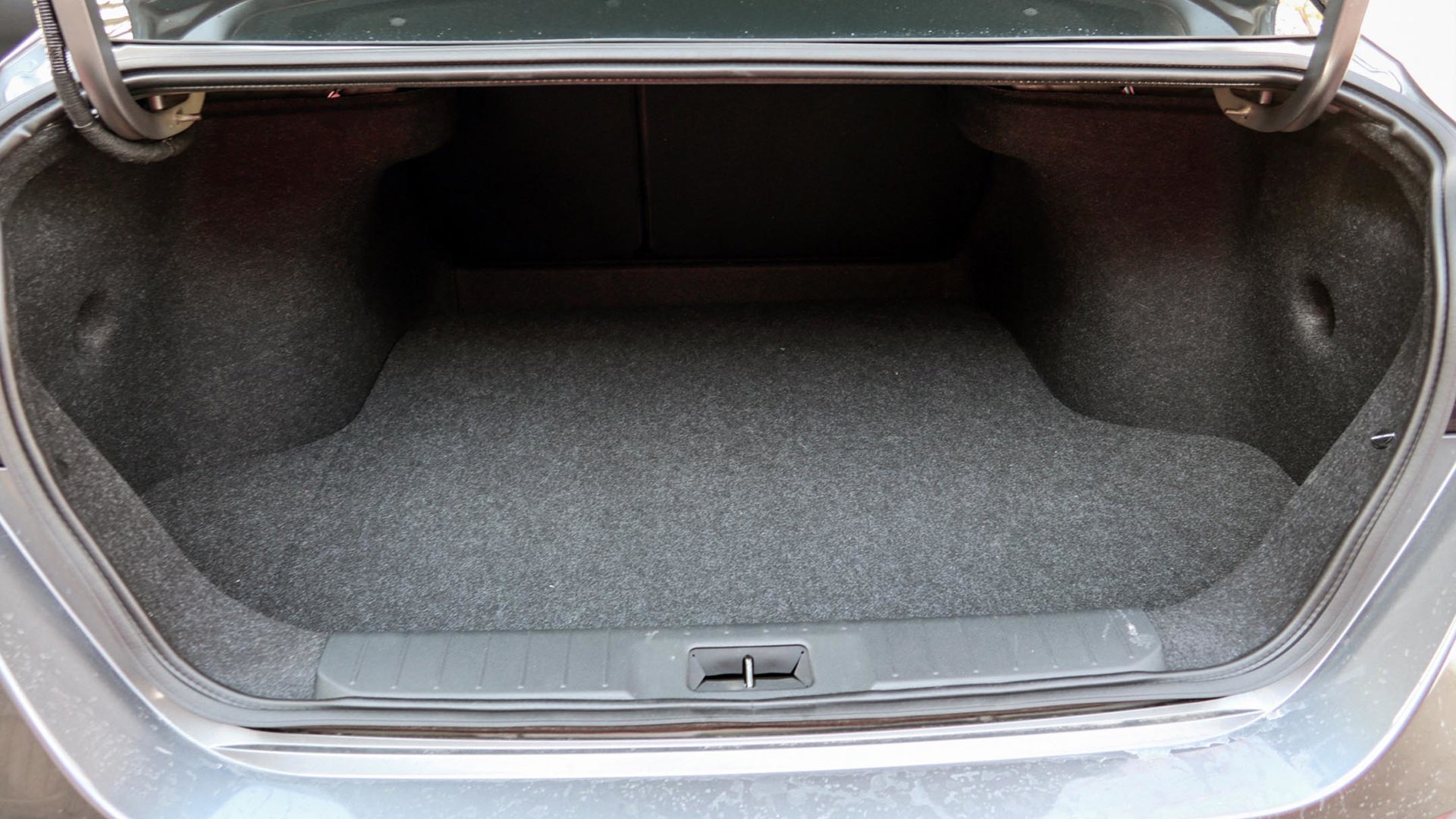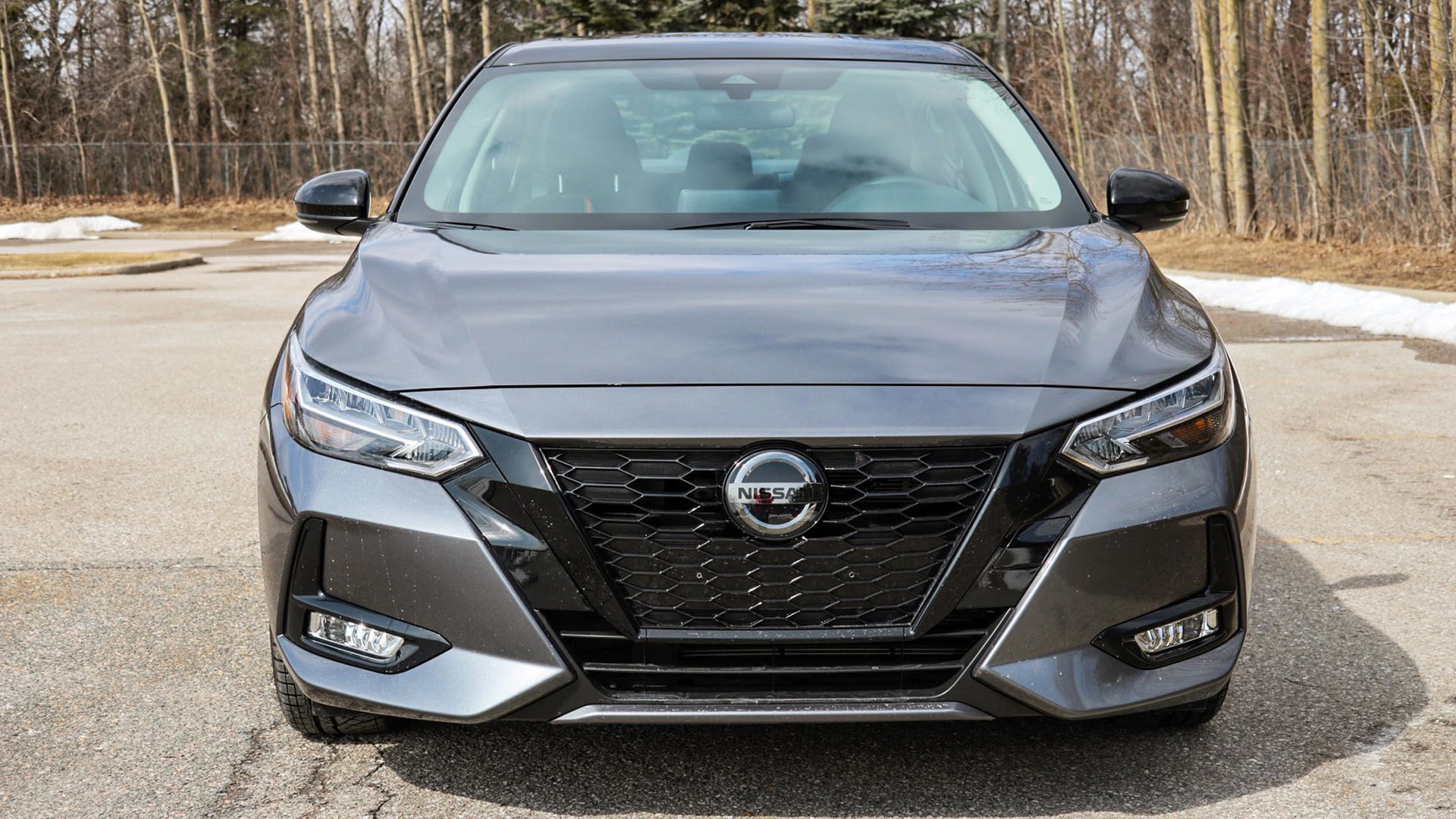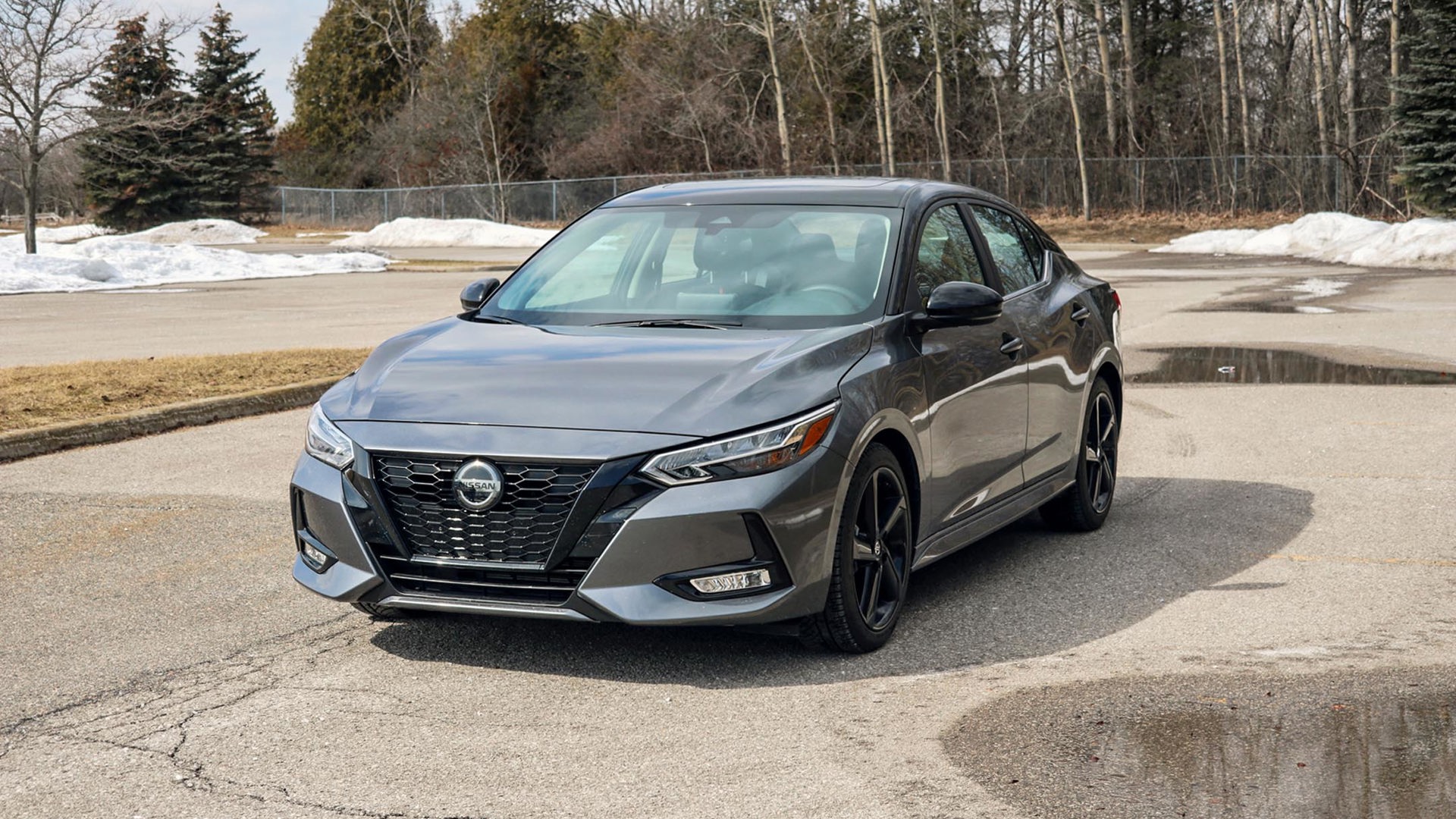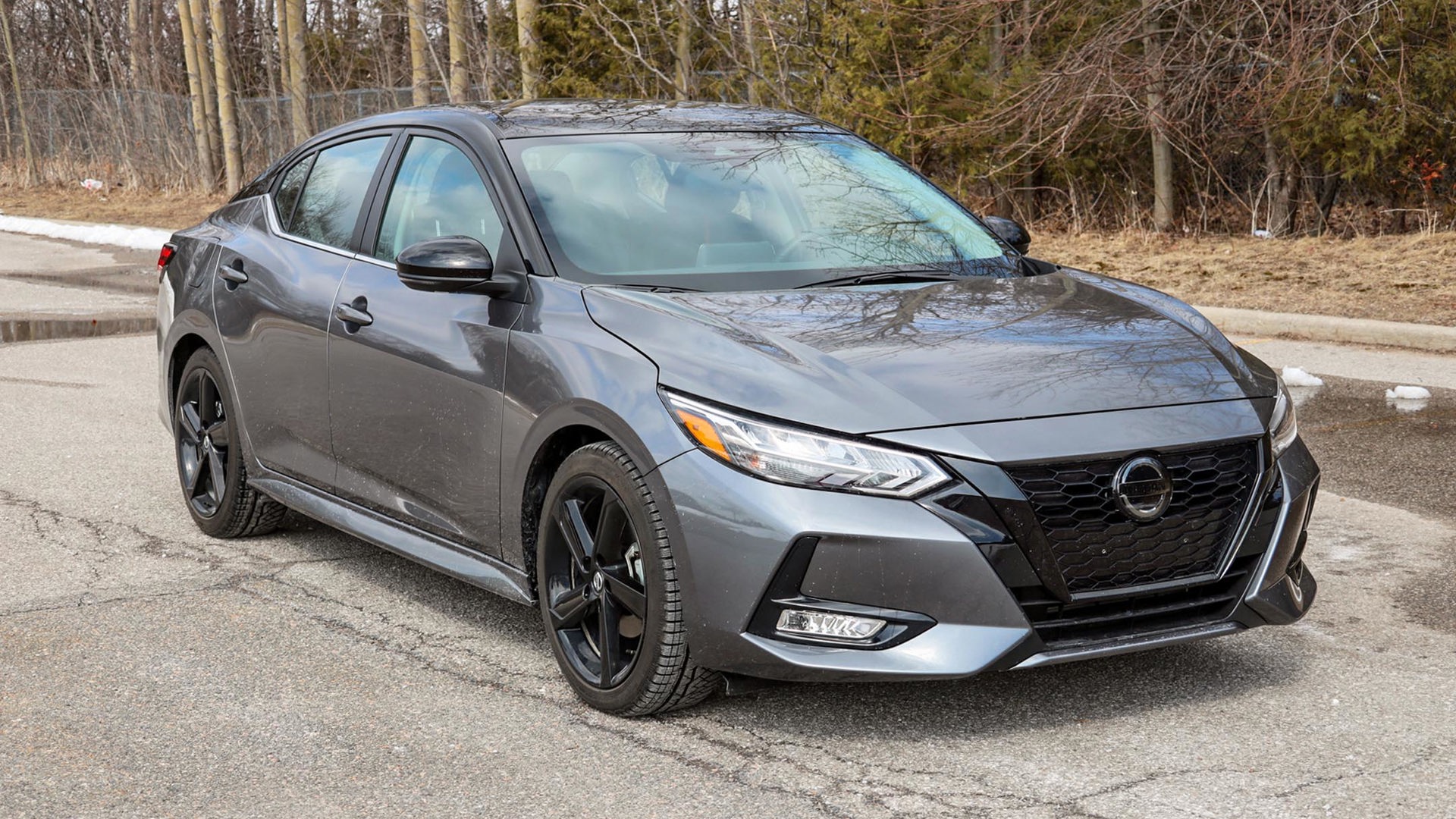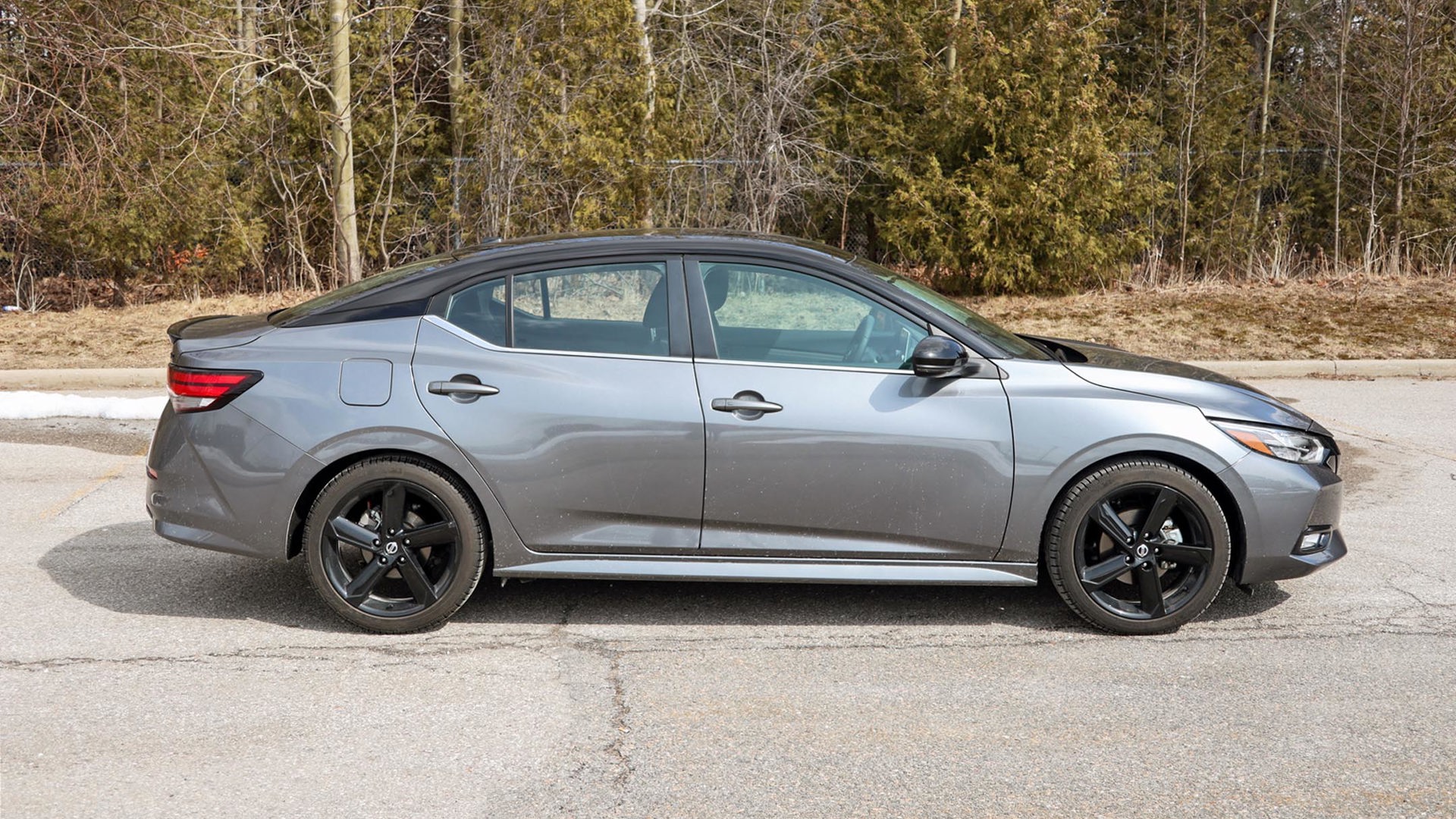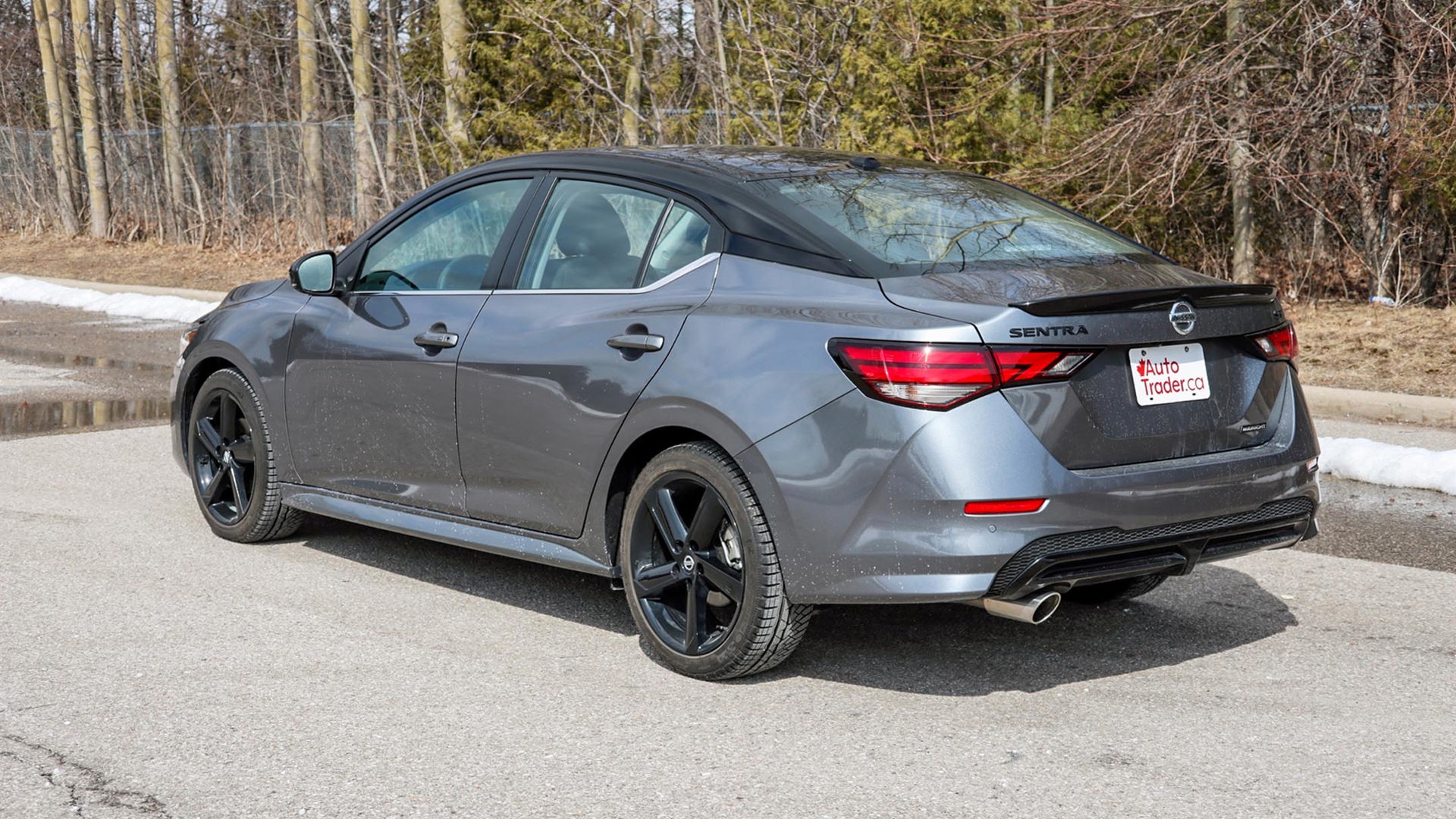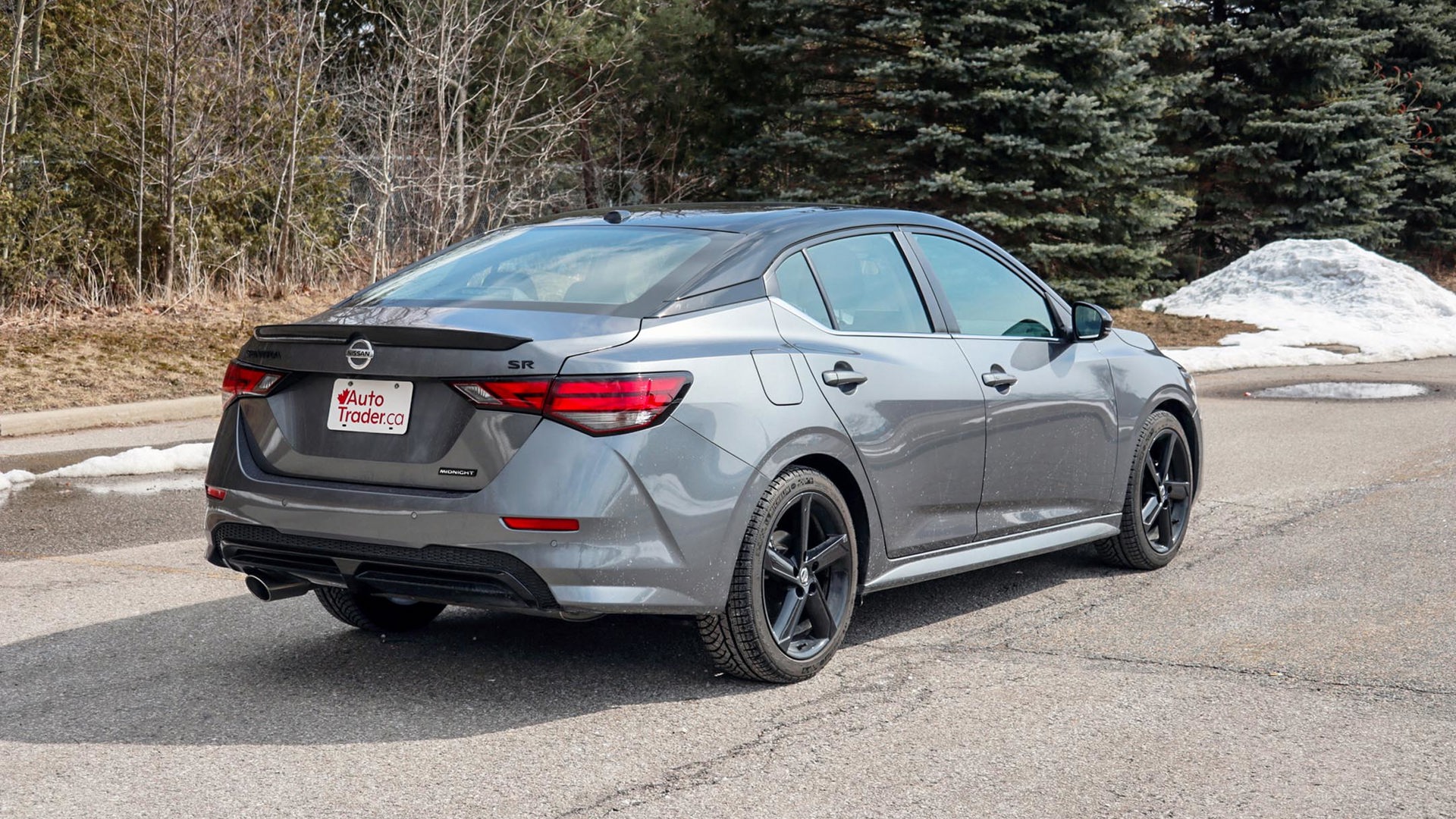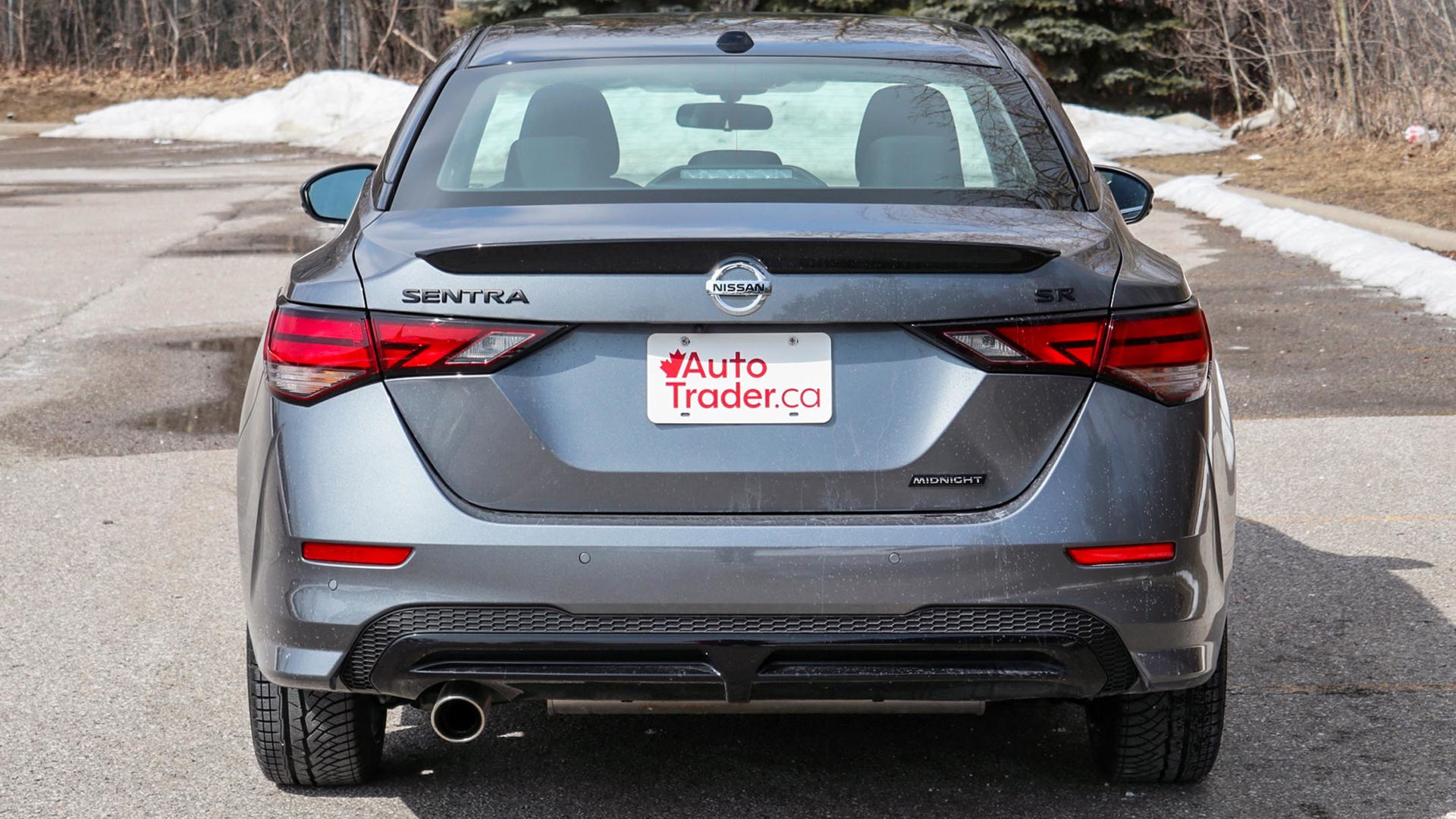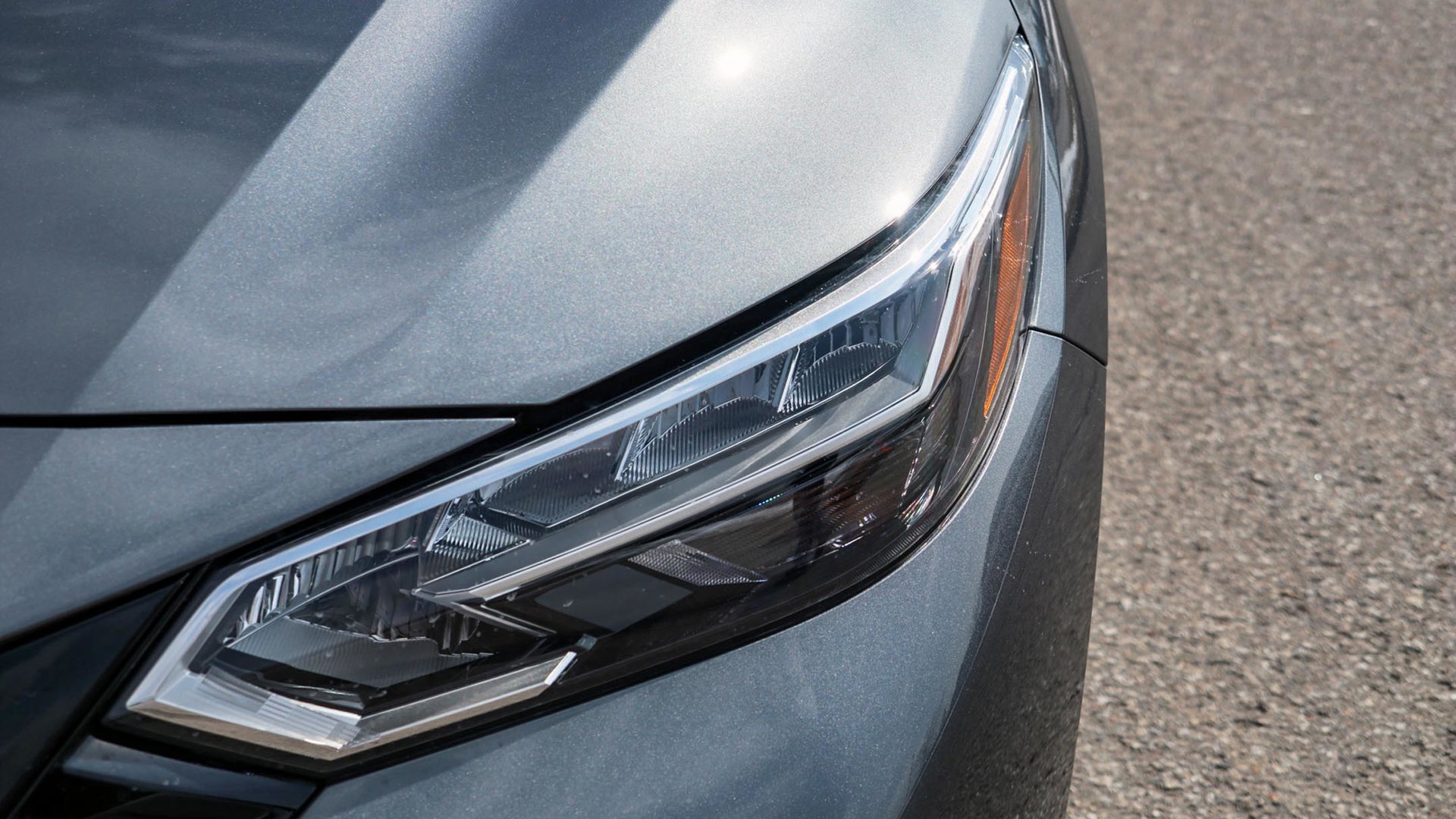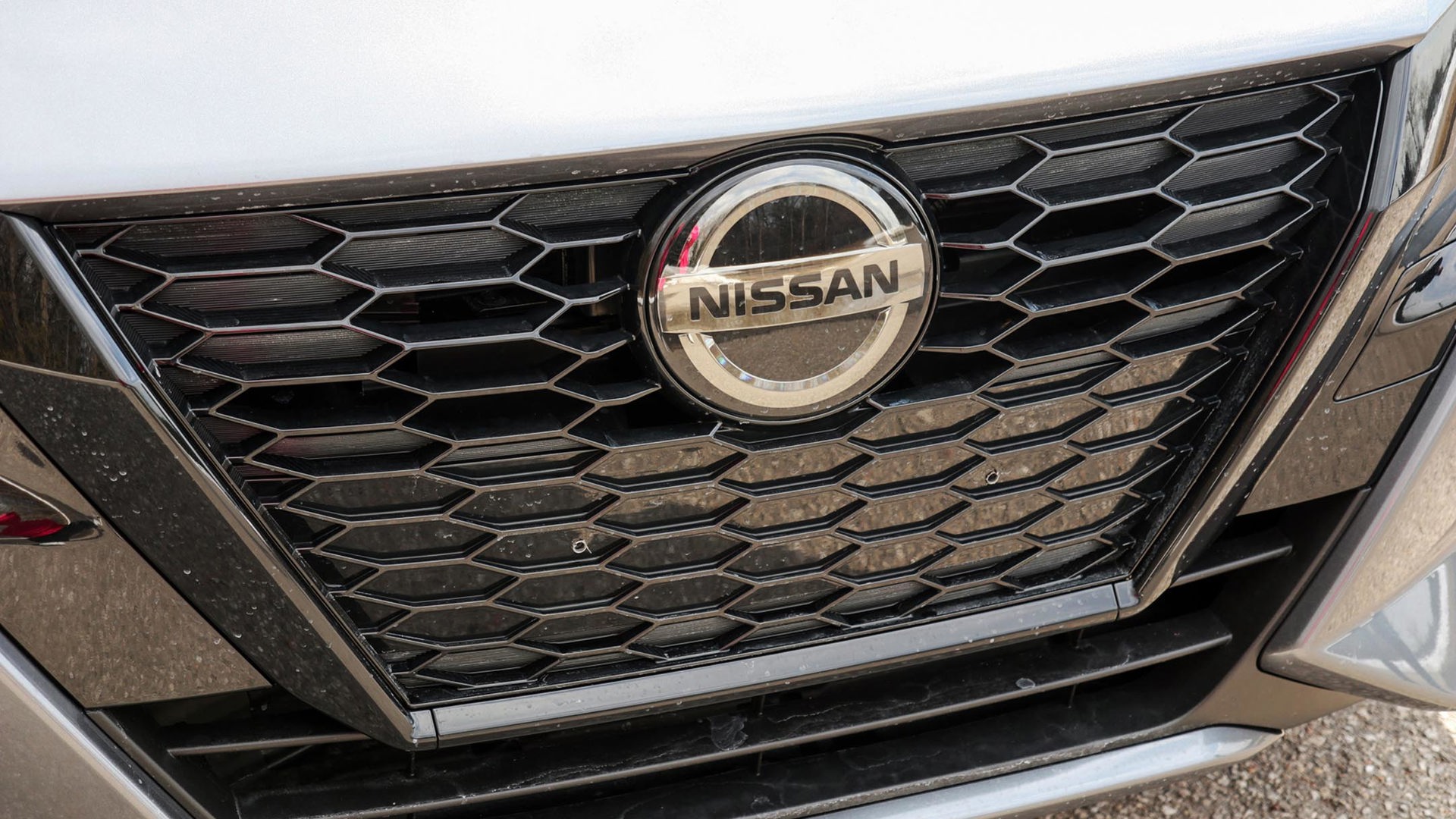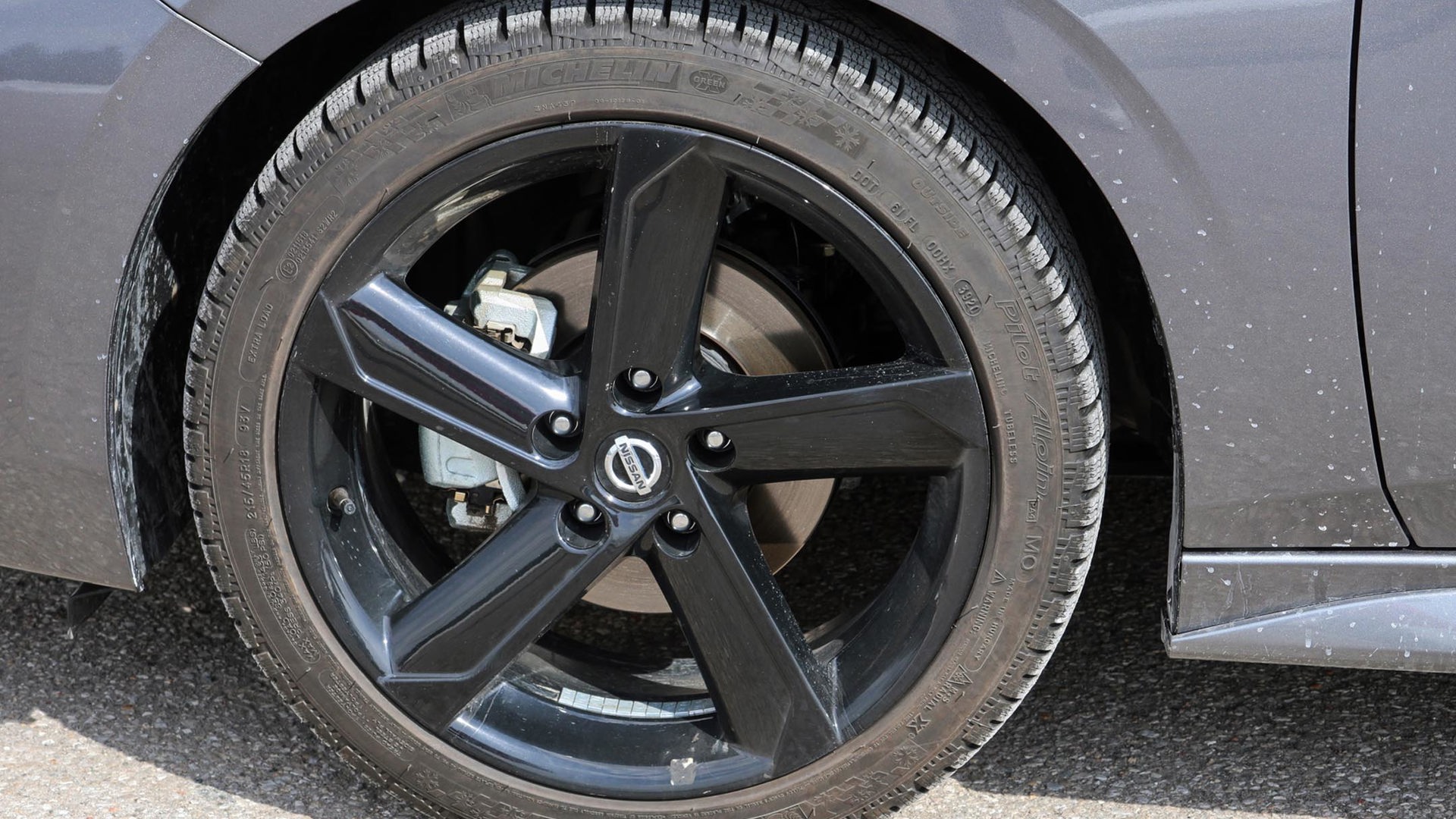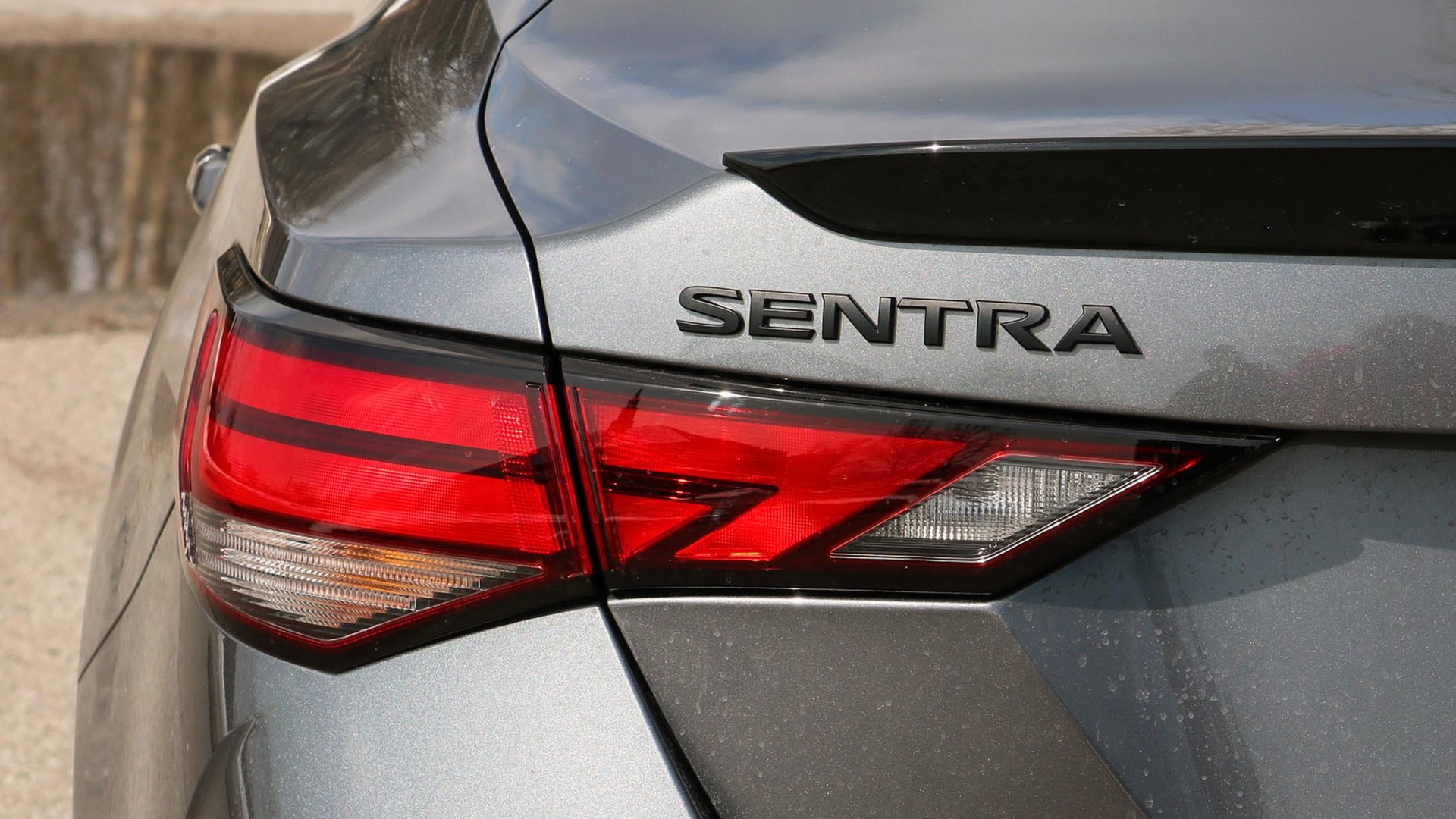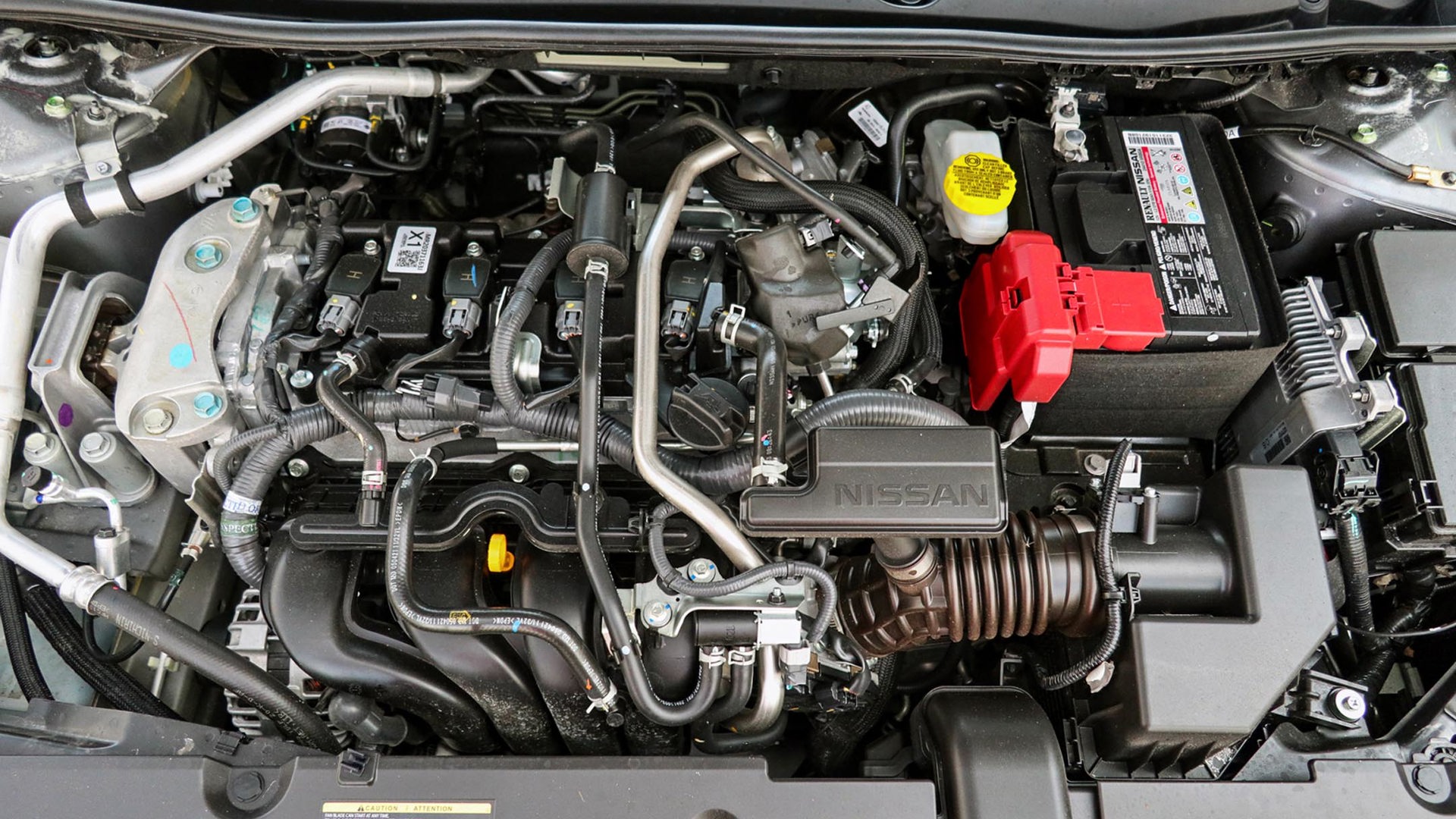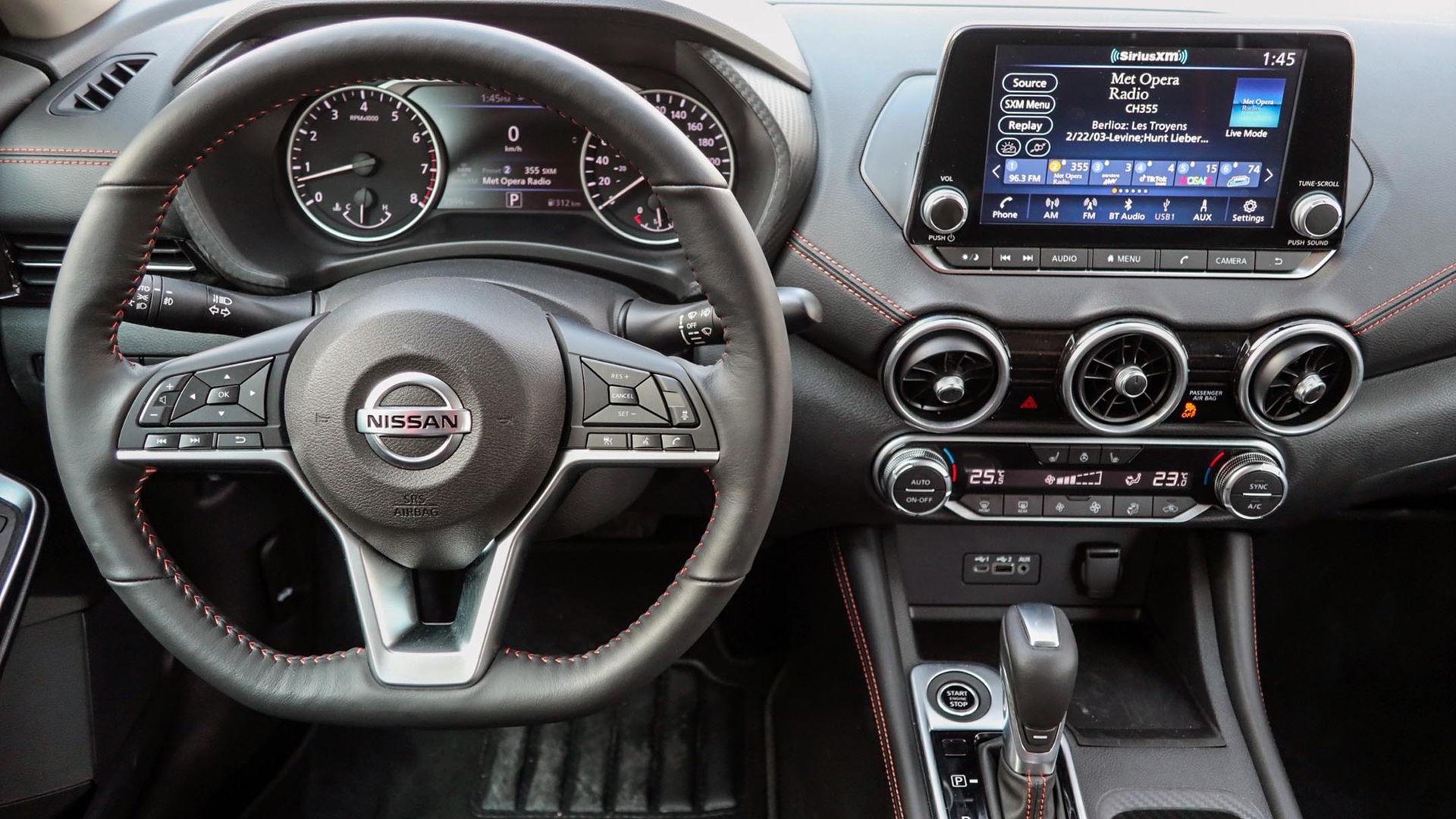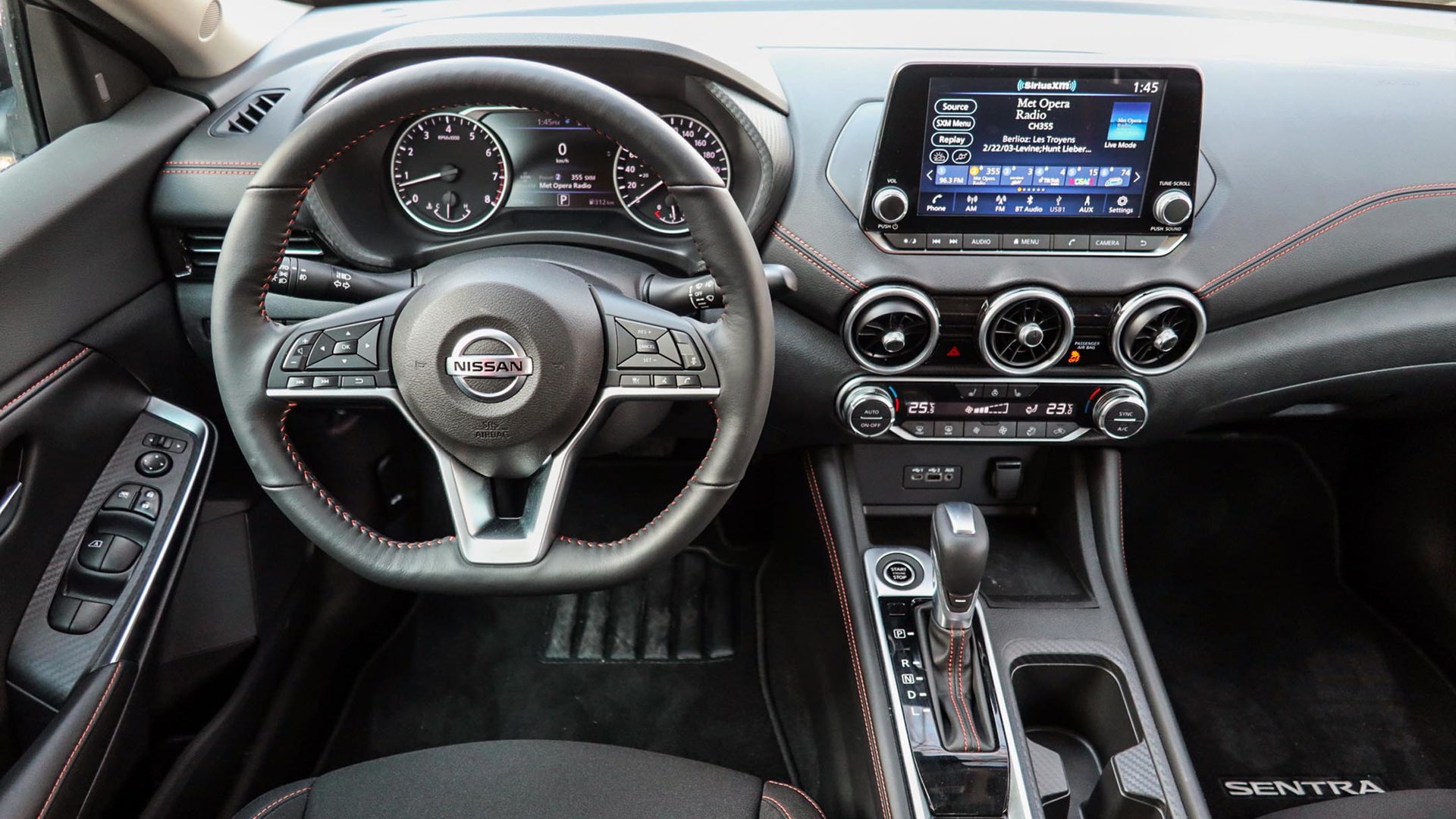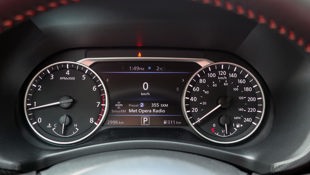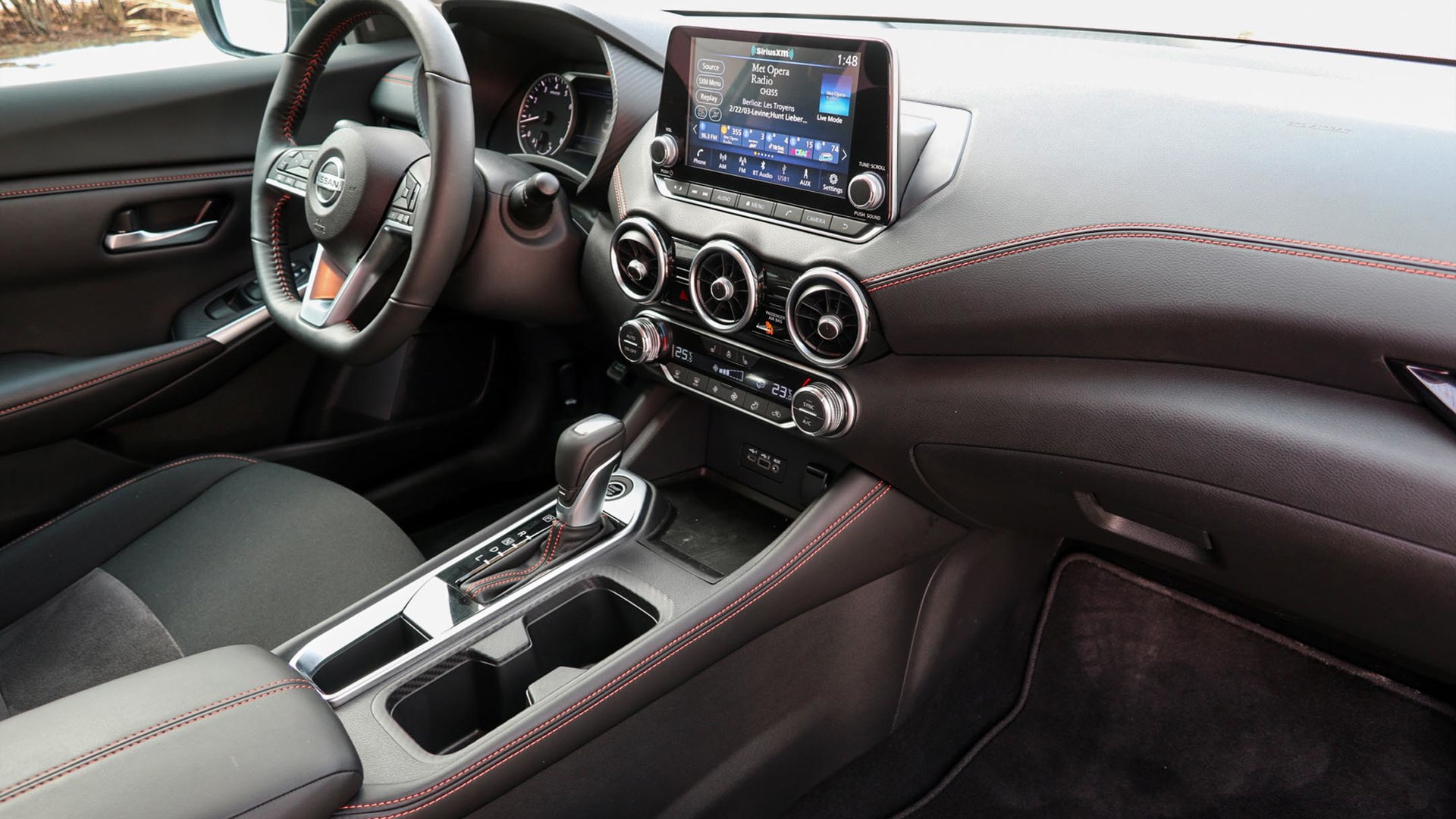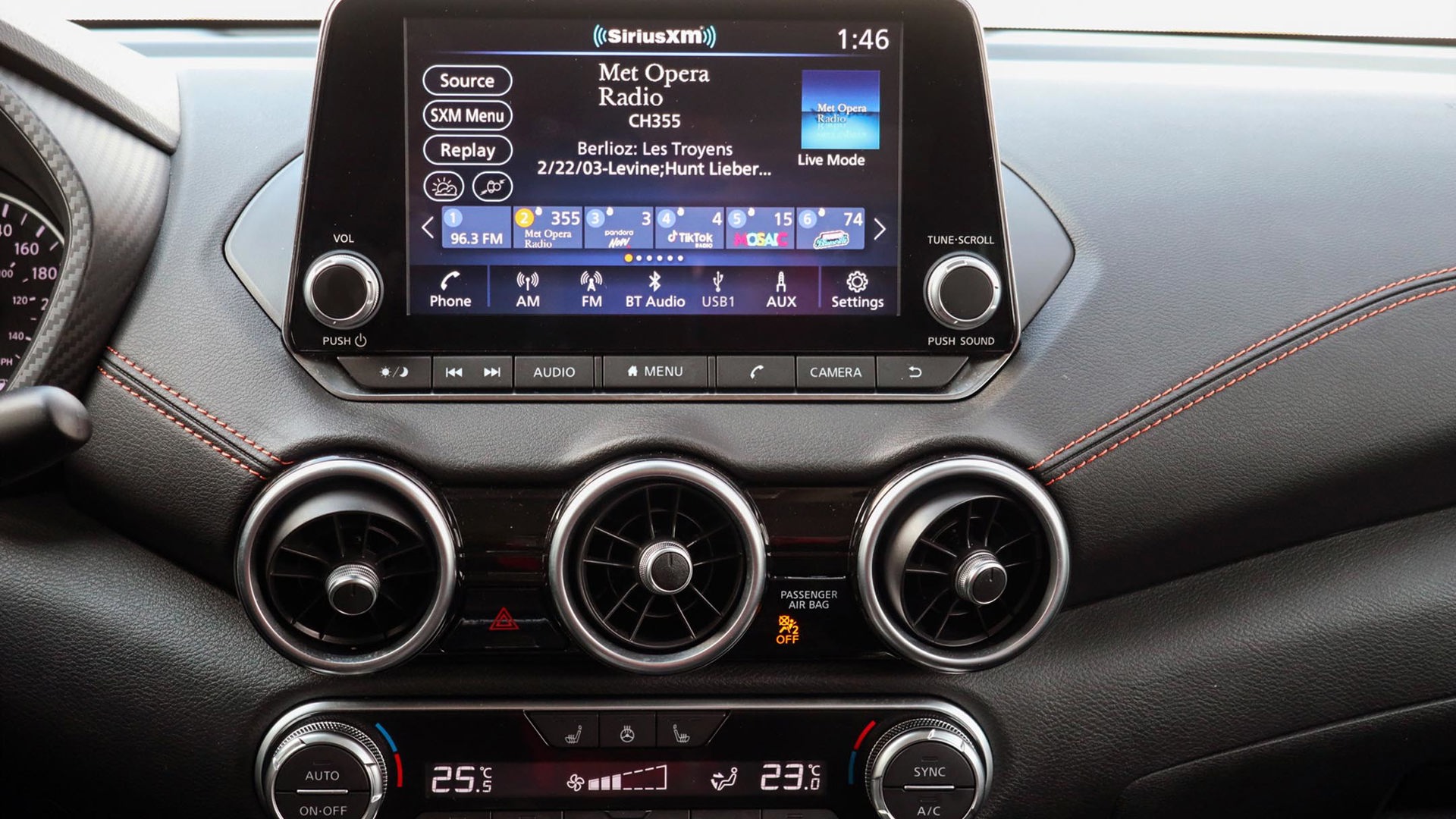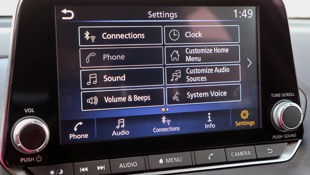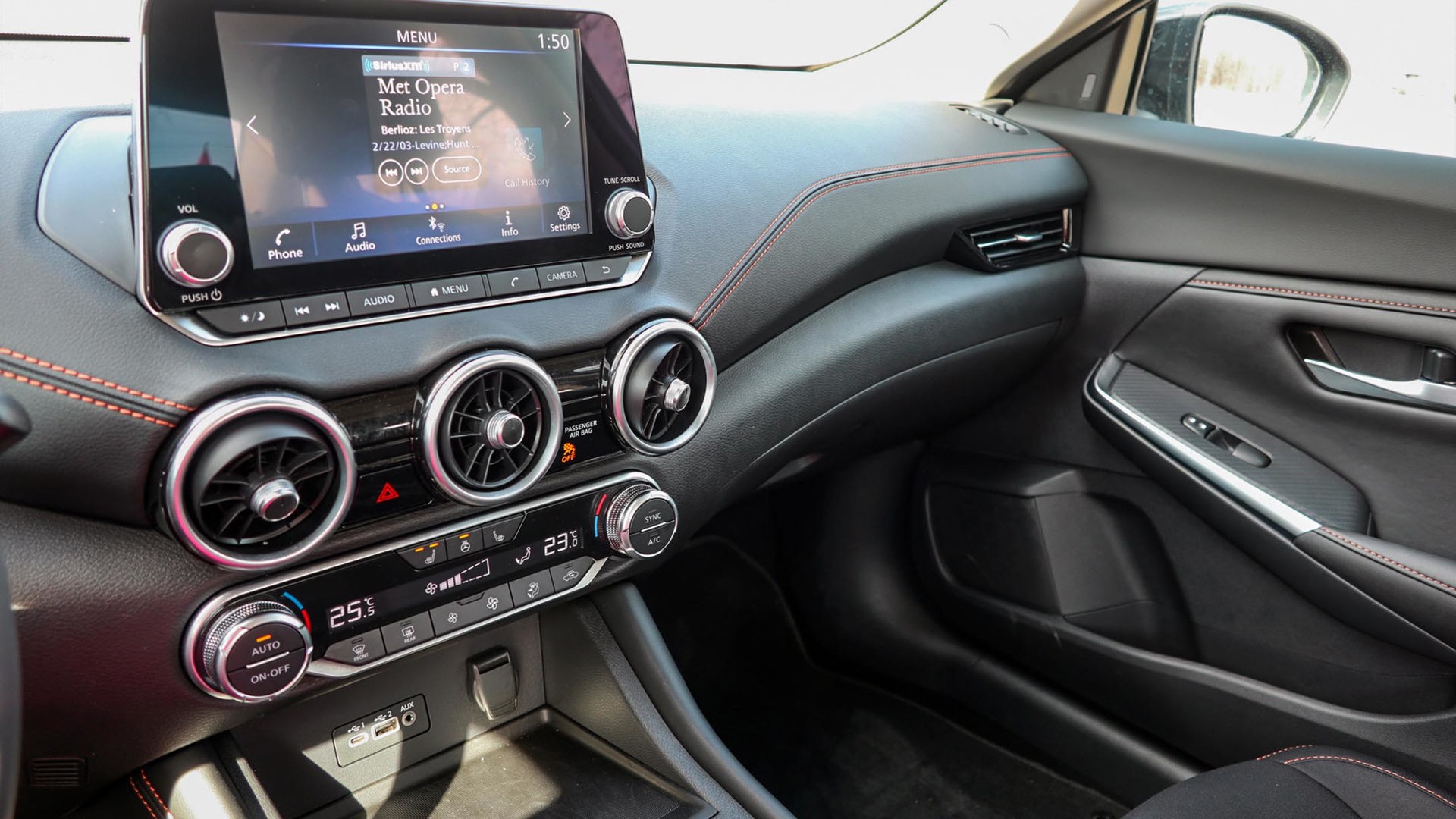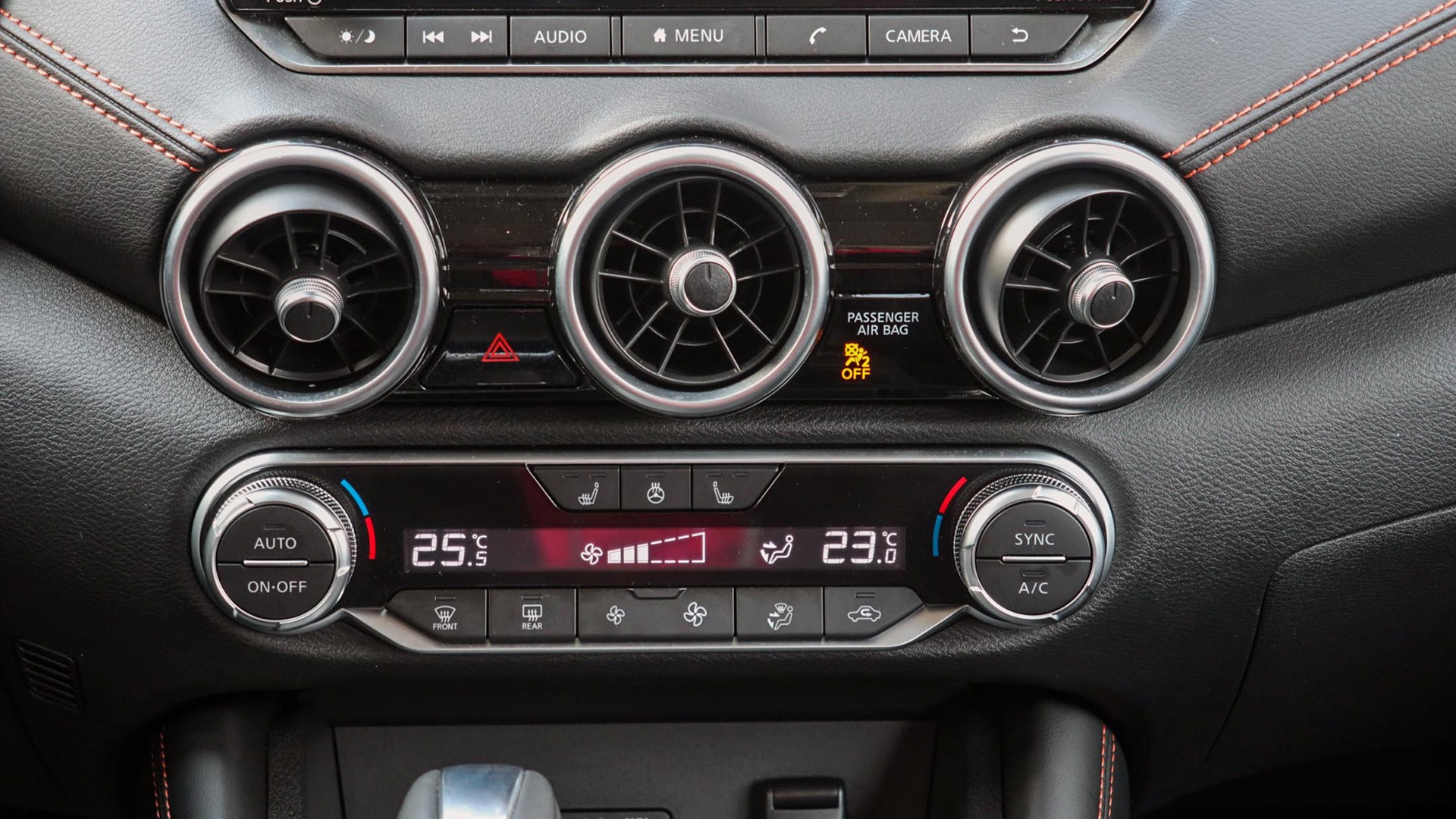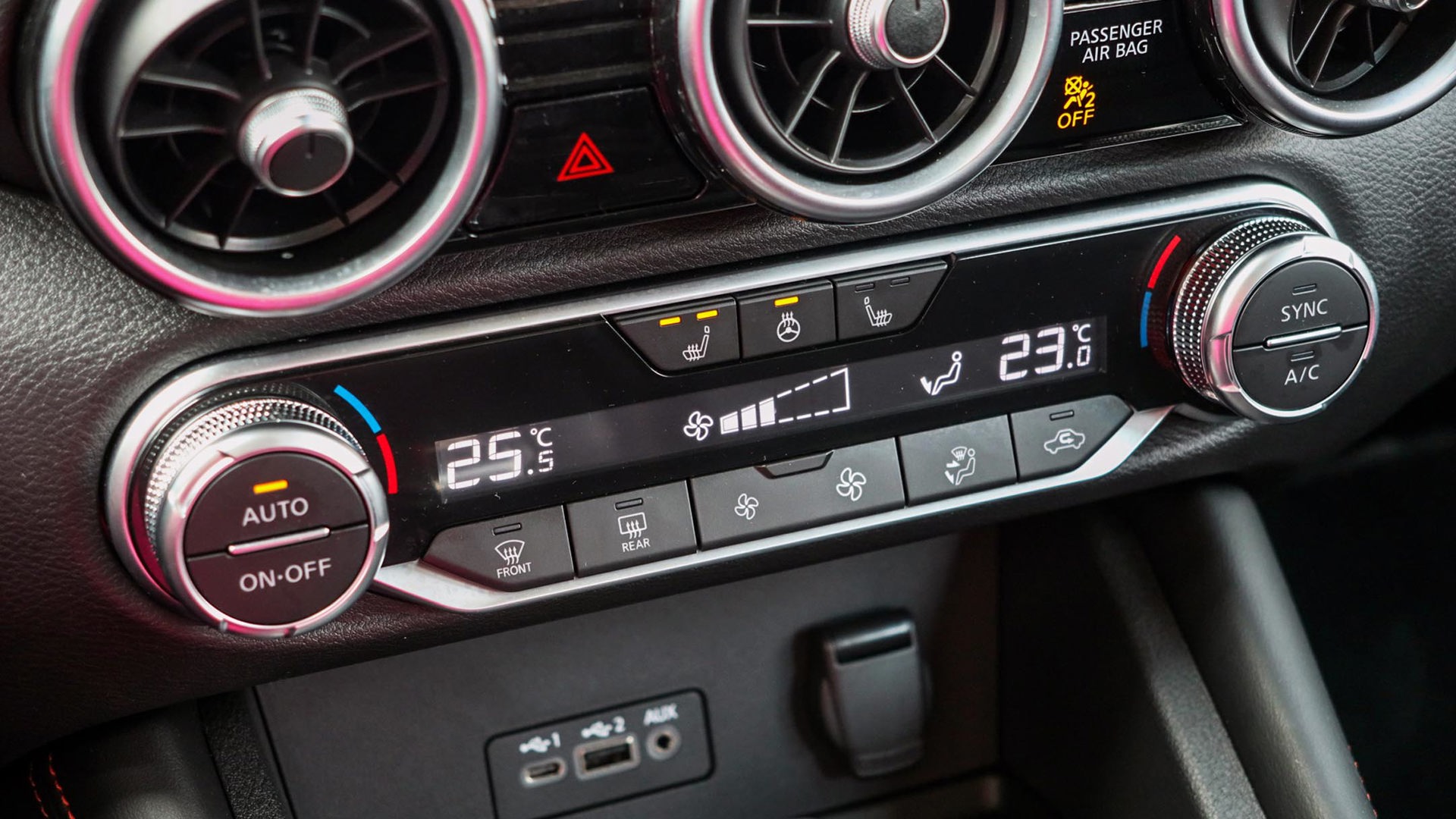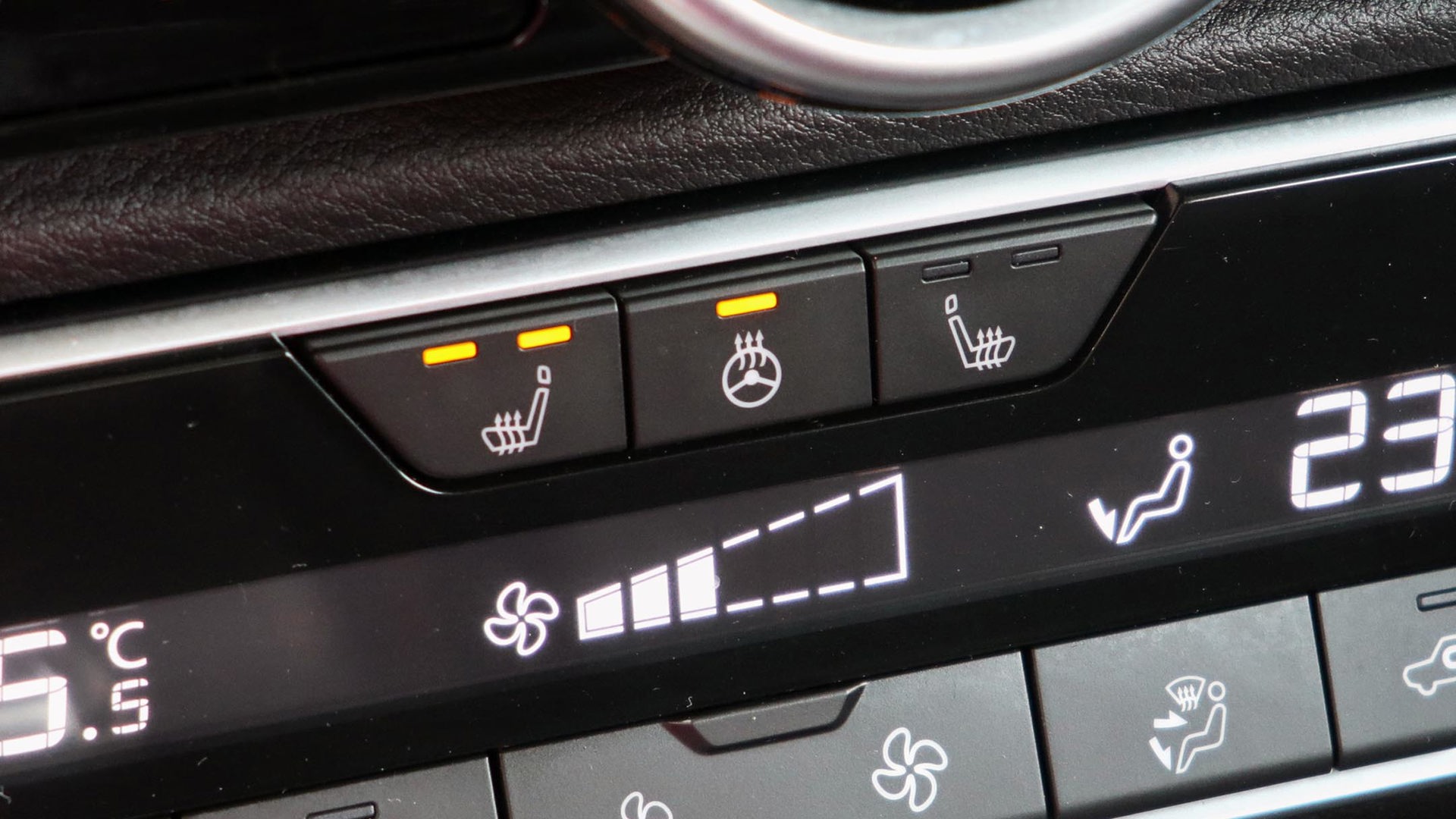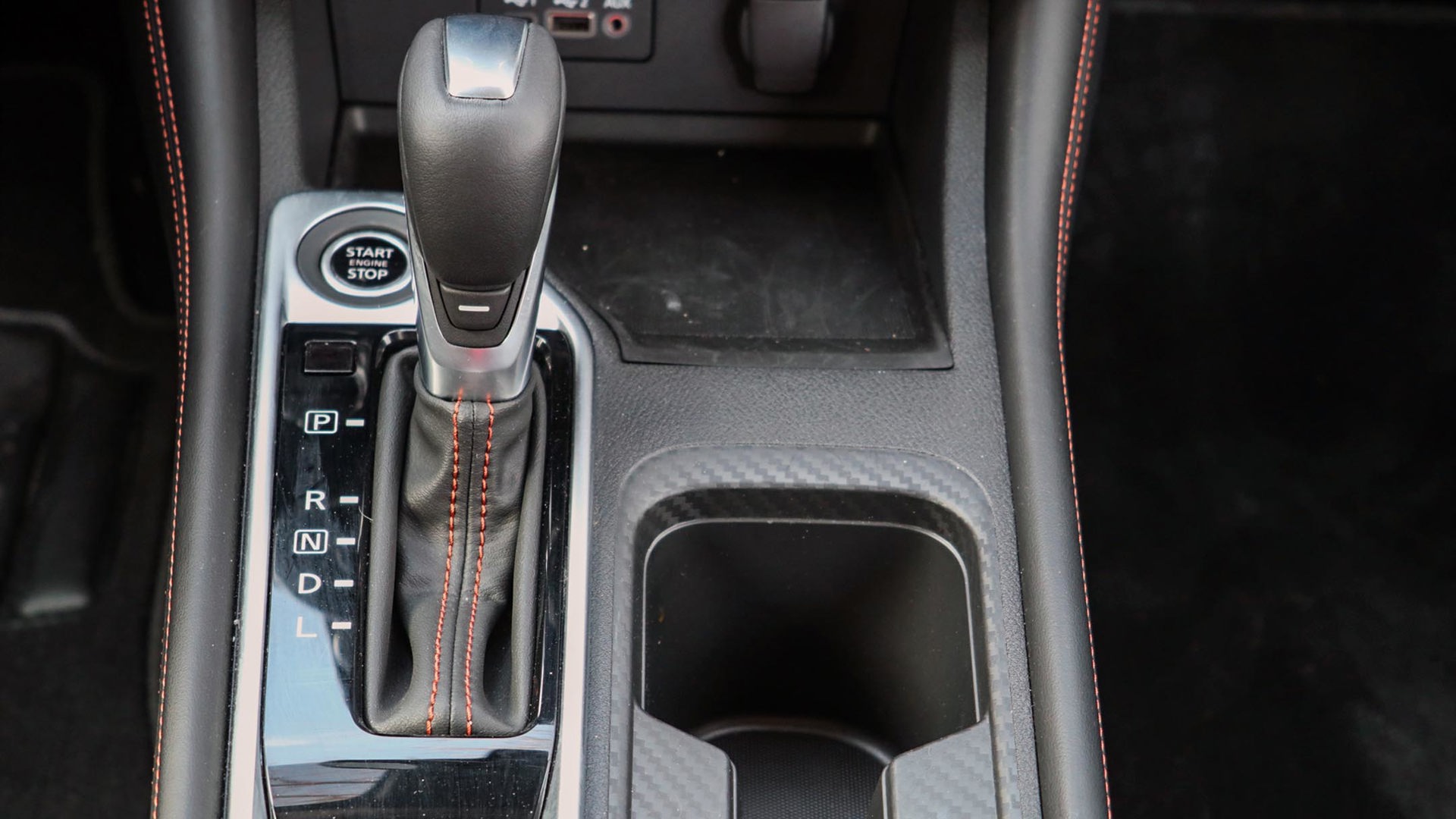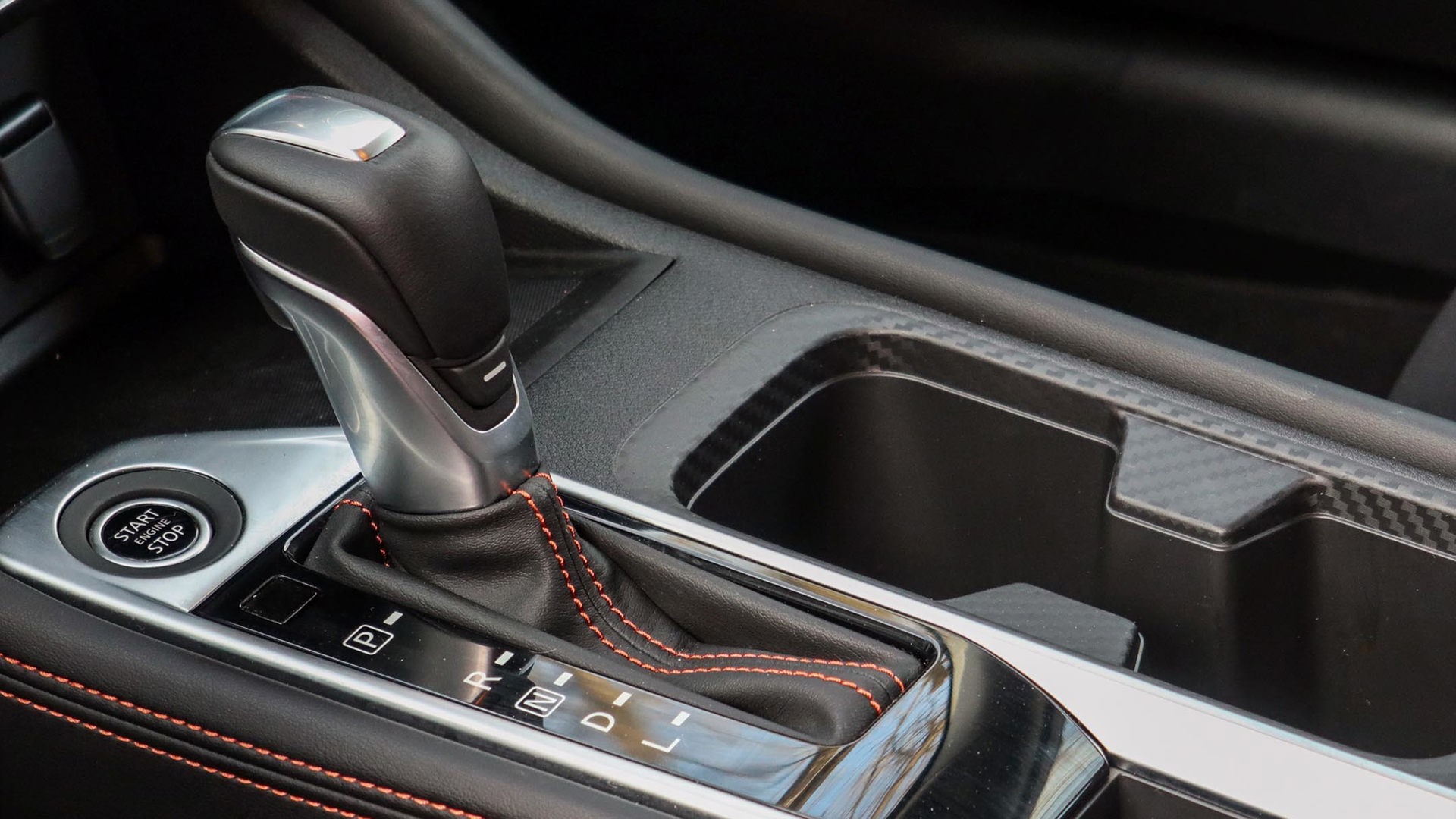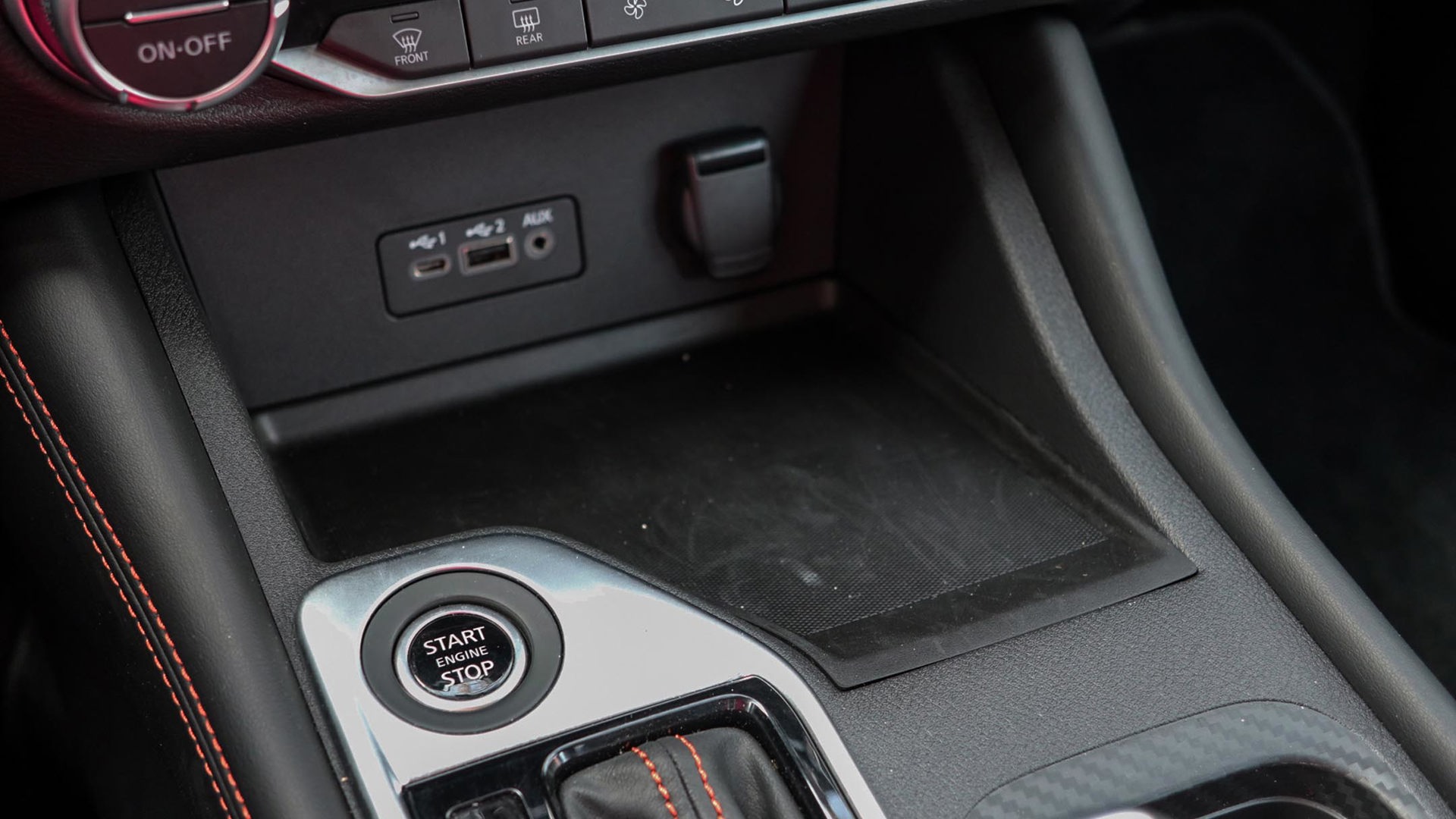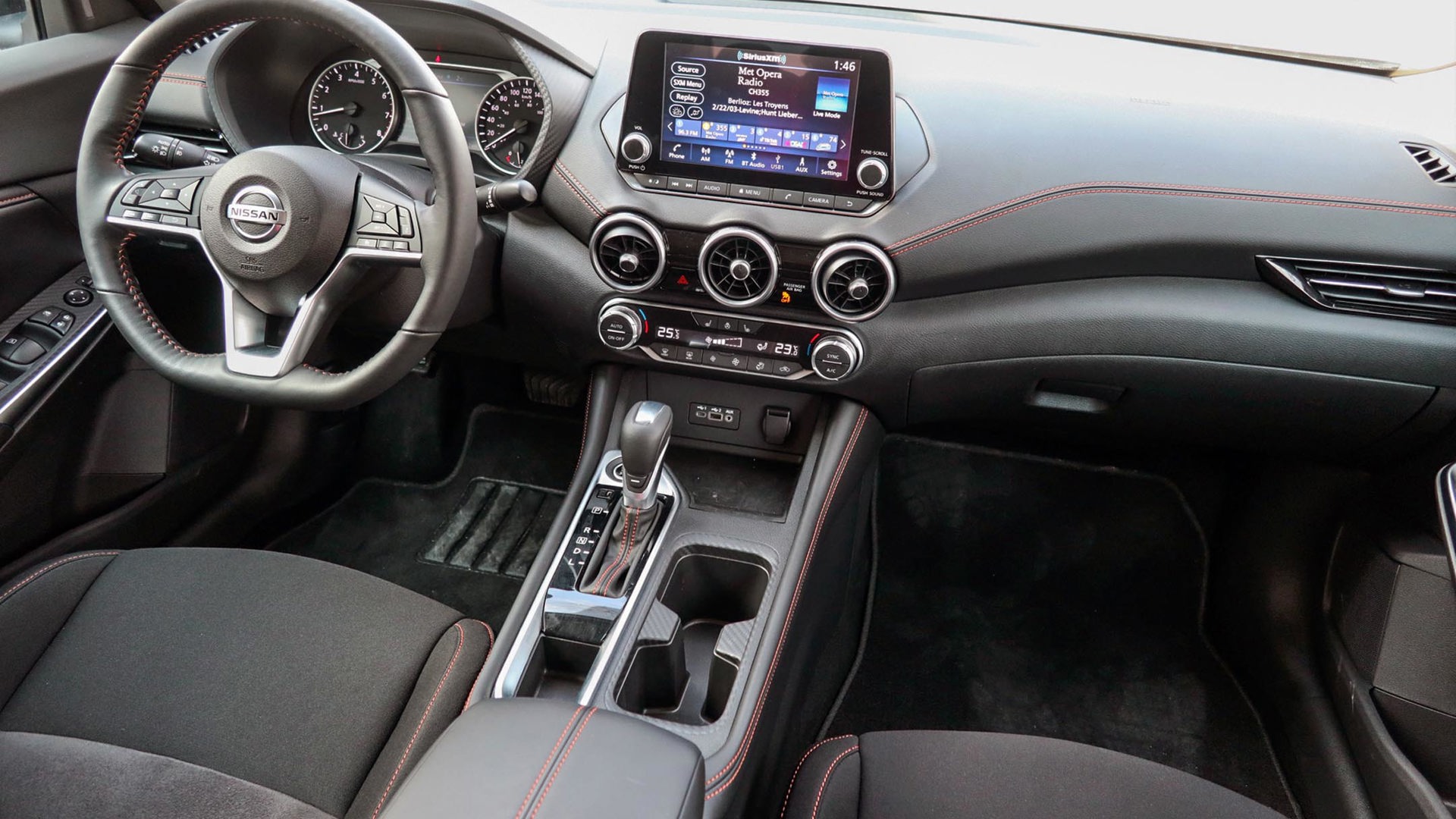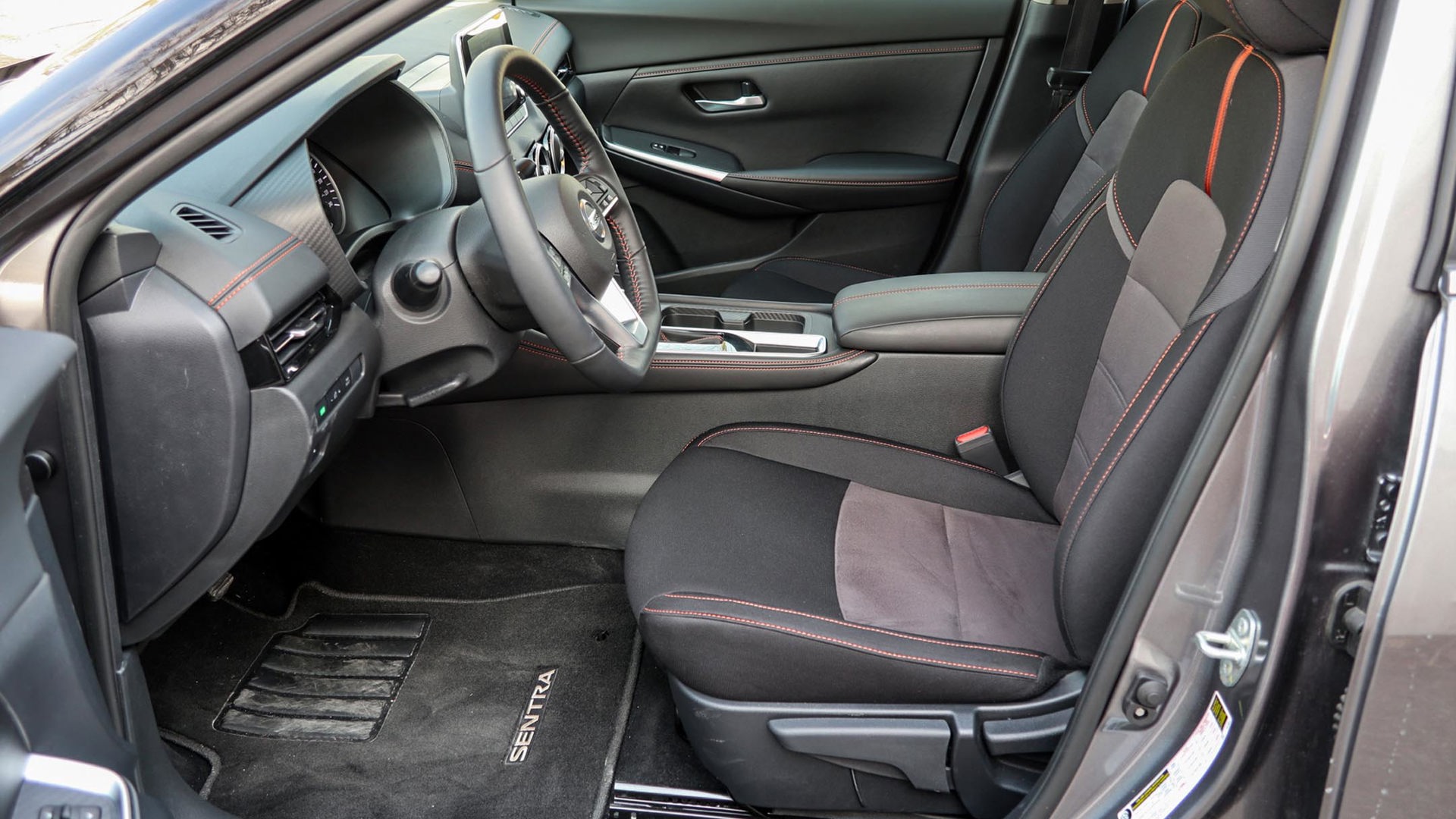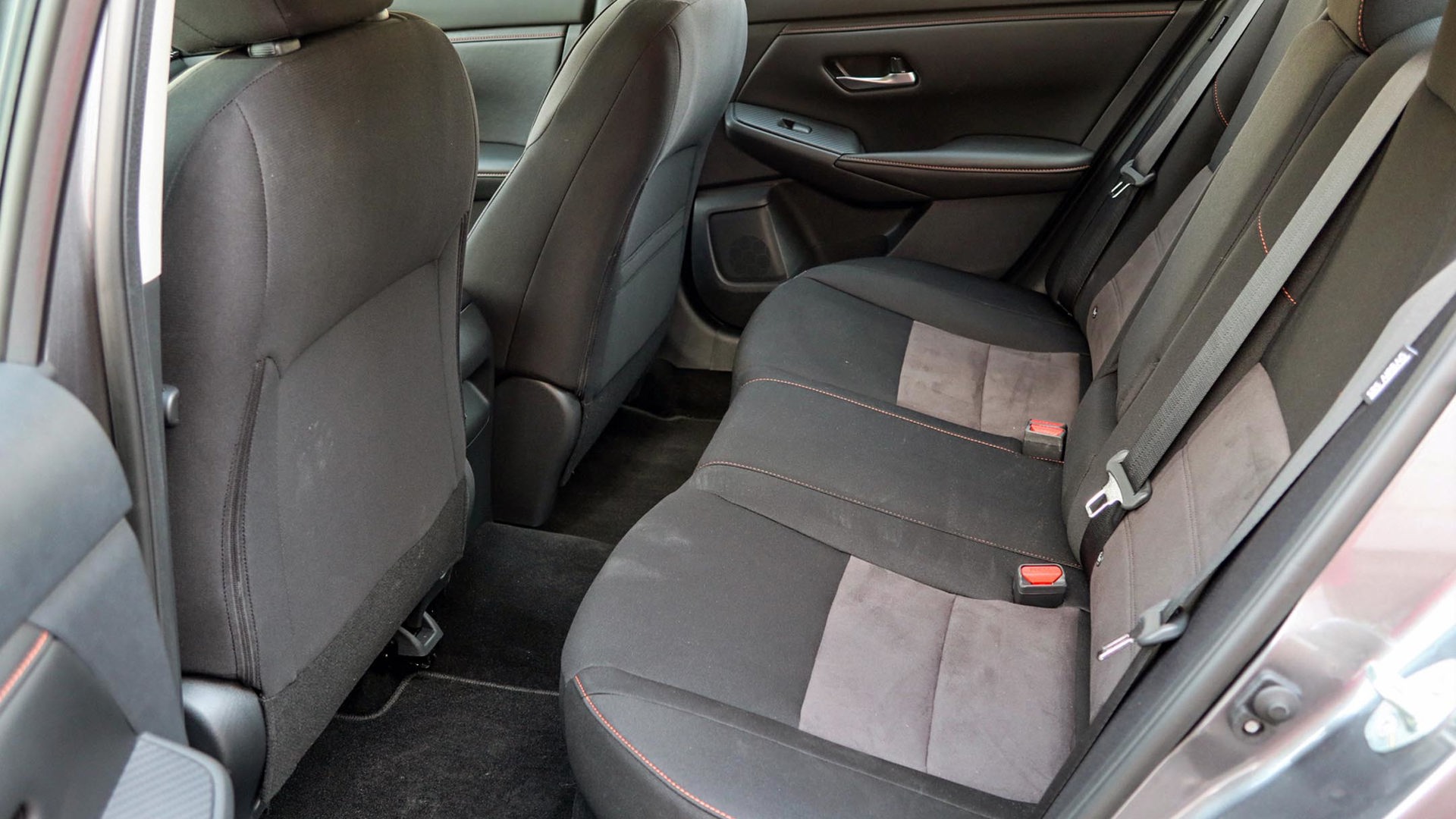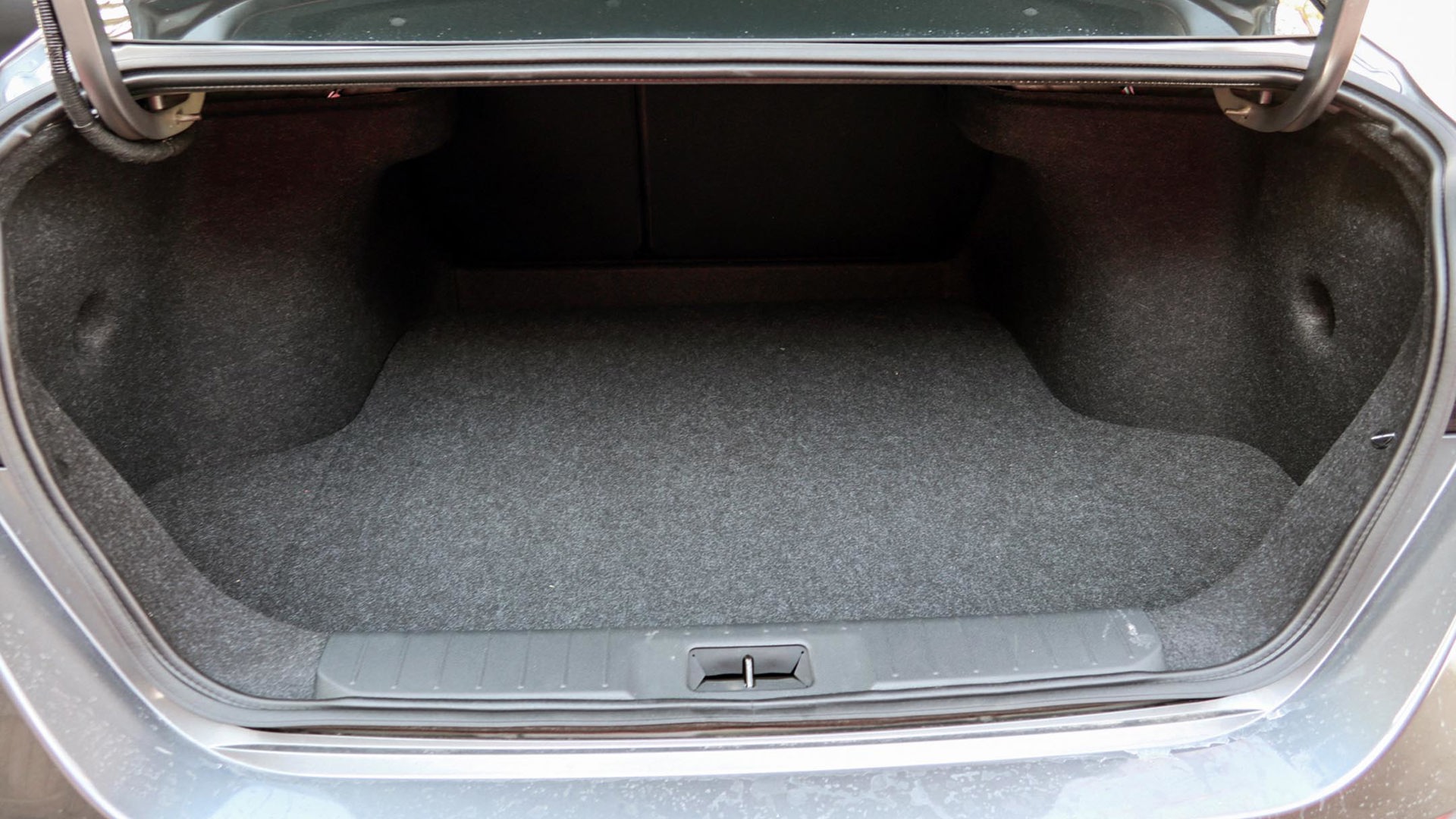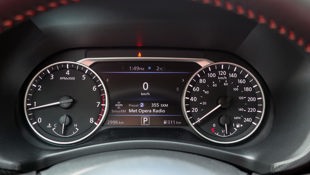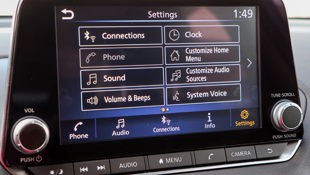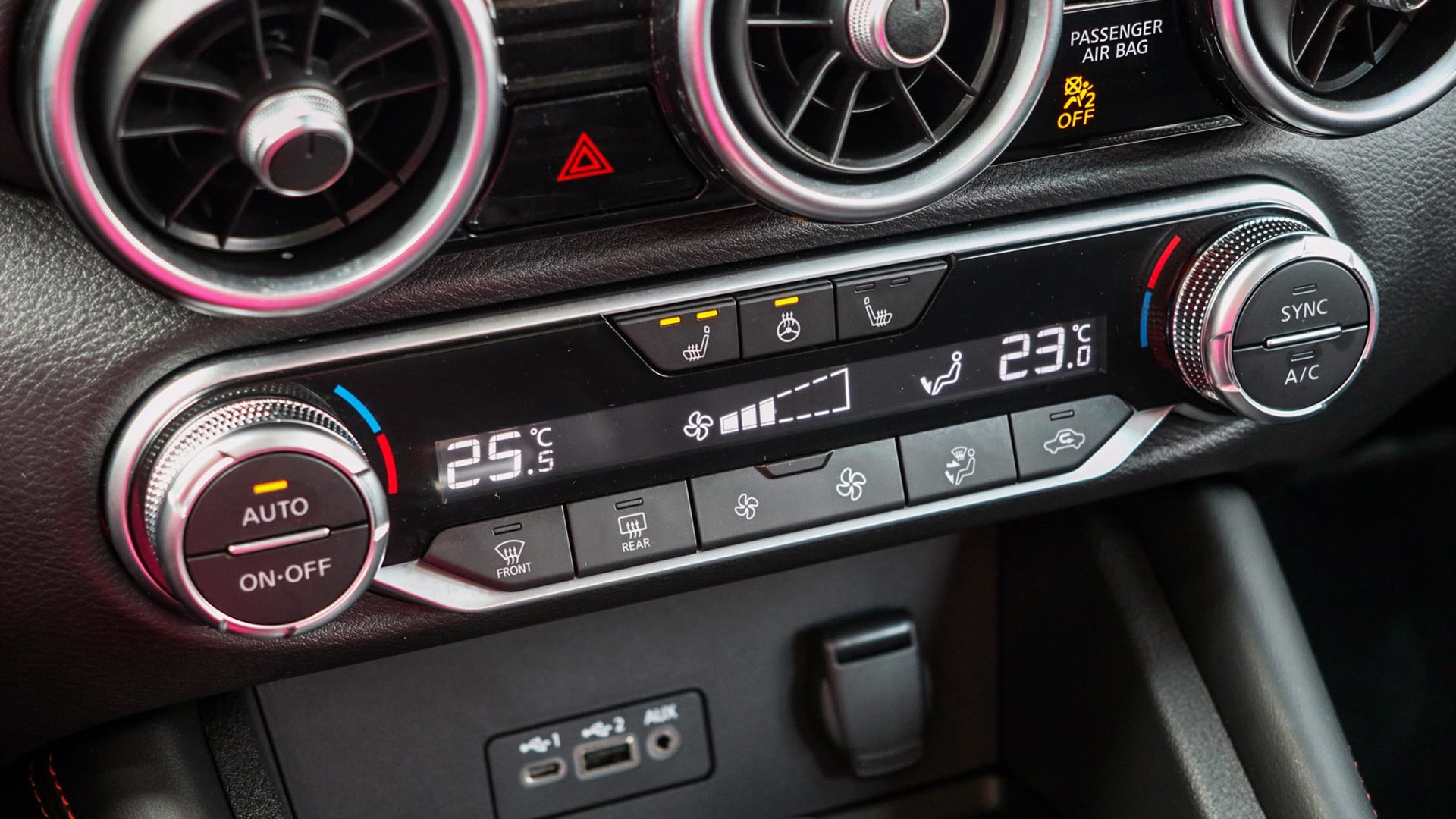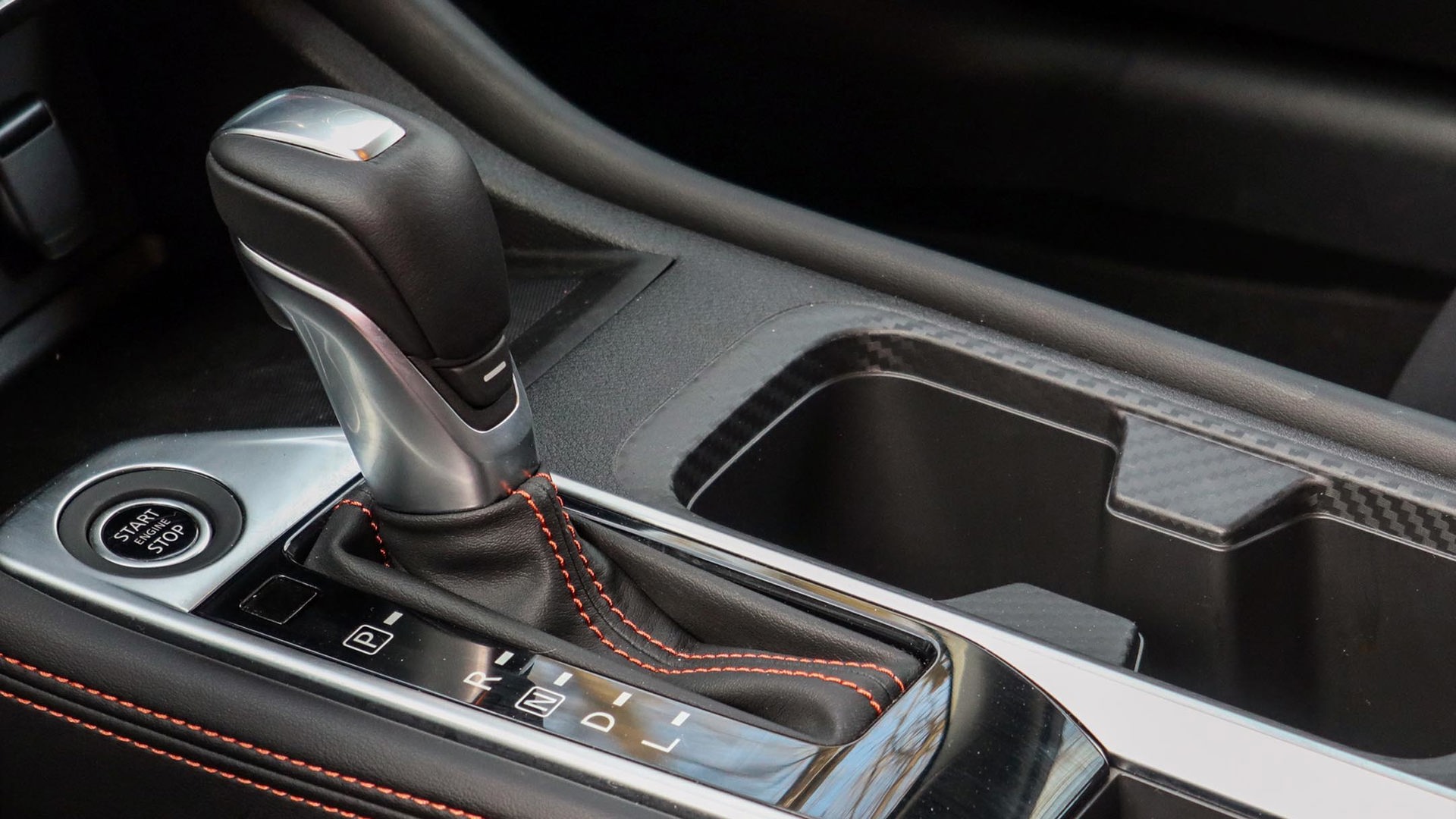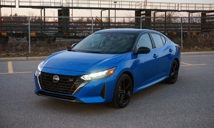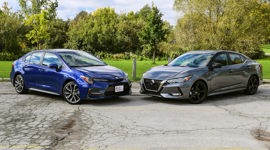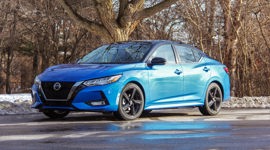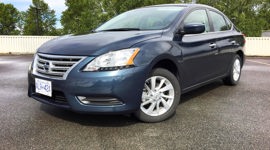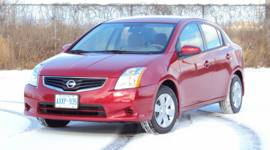 AutoTrader SCORE
AutoTrader SCORE
-
STYLING9/10
-
Safety9/10
-
PRACTICALITY8/10
-
USER-FRIENDLINESS8/10
-
FEATURES8/10
-
POWER7/10
-
COMFORT8/10
-
DRIVING FEEL8/10
-
FUEL ECONOMY8/10
-
VALUE8/10
Not everyone wants to pay a lot for a car, and fewer still want the car to look like they went the cheap route.
The 2022 Nissan Sentra SR Midnight Edition offers numerous features for its price, while its interior and exterior styling make it look more expensive than it is. With 18-inch black wheels, and a black grille, spoiler, and badges, it starts at $27,168 before taxes but including a non-negotiable delivery charge of $1,670. My tester further had a $630 coat of two-tone metallic paint, bringing it to $27,798.
Styling: 9/10
The compact Sentra looks like a scaled-down version of its Altima sibling, which is also available with the same SR Midnight package, with the hood flowing to the grille, swoopy headlights alongside it, and a sculpted rear. I’m not that keen on the blacked-out accents, but it must be popular with enough buyers, because a lot of automakers are offering similar darkened accents these days.
The cabin is very handsome, melding modern styling cues with an old-fashioned (and much appreciated) simplicity to its controls. The three central round air vents are easy to direct, even with gloves, while the touchscreen display is mounted tablet-style in the dash, where it keeps your eyes up when you’re using it.
Safety: 9.5/10
The Sentra receives the highest five-star crash rating from the United States National Highway Traffic Safety Administration (NHTSA), and it’s a Top Safety Pick from the Insurance Institute for Highway Safety (IIHS), which also gives it a top “Good+” rating for the ease of use of its child tethers.
Standard equipment on every trim includes emergency front braking with pedestrian detection, rear automatic braking, lane departure warning, lane tracing control, driver attention monitor, automatic high-beam headlights, and blind-spot monitoring with rear cross-traffic alert, along with the rearview camera mandatory on all new vehicles. All trim levels have cruise control, but you have to move up one from base to get adaptive cruise. The top-level SR adds a 360-degree camera.
Features: 8/10
The Sentra comes well-equipped, with all trims including items such as heated seats, automatic headlights, push-button start, Apple CarPlay and Android Auto, Siri Eyes Free, and a tire pressure monitoring system that chirps when you’re pumping up your tires and reach the correct pressure.
The next-step-up SV adds dual-zone automatic climate control, proximity key, remote starter, a slightly larger eight-inch centre touchscreen (a seven-inch unit is standard), extra USB ports, and satellite radio; and then the SR adds 18-inch wheels, a sunroof, LED headlights, and a heated steering wheel. If you go to the top SR Premium, one step above my SR Midnight Edition, you also get an auto-dimming mirror, illuminated vanity mirrors, unique headlights, a power driver’s seat, leather-look upholstery, and an upgraded stereo.
User Friendliness: 8/10
I like simple controls, and the Sentra delivers. The climate control uses buttons and dials, and the air vents are easy to open and direct. The infotainment system has hard buttons to bring up the home menu and other functions, and there are dials for volume and tuning. The screen icons are large and intuitive as well. The doors open fairly wide so it’s easy to get in and out, but not so much that you can’t reach the handle to close it. After driving a string of sport-utilities it was nice to get into a small car again, with its parking-friendly size and good visibility.
Practicality: 8/10
Against the award-winning Honda Civic, the value-packed Kia Forte, and the tried and true Toyota Corolla, the Sentra has more front-seat legroom, and is on par with the Corolla but slightly behind the Forte and Civic for rear-seat leg space. Headroom both front and rear is just slightly less than in those rivals. At 405 L of trunk space, the Sentra outdoes the Corolla at 370 L, but the Civic offers 419 L, and Kia’s Forte has 433 L of space under the trunk lid.
Comfort: 8/10
All but the top-level SR Premium have heated cloth seats, which I prefer, since cloth tends not to be as hot or cold for that initial climb-in after the car’s been sitting. There are two levels for seat heating, and the wheel warms up, too. The seats are well-done, with good support on all but the longest drives. The ride is firm but not unacceptable. Overall, it’s pretty much what you’d expect for the segment.
Power: 7/10
All Sentra trims are powered by a 2.0L four-cylinder engine that makes 149 hp and 146 lb-ft of torque. Some competitors don’t make that much – you get 139 hp in the Corolla’s base engine, and 147 in the Kia Forte – but the Civic makes 158 or 180 hp, depending on the engine, and Toyota’s optional engine goes to 169 hp.
The Sentra can be had with a six-speed manual transmission in the S and SR levels, while the automatic option is a continuously variable transmission (CVT). This little car will get you where you’re going, but gets noisy and huffed-out when asked to accelerate hard or pass at highway speeds.
Driving Feel: 8/10
Although the Sentra can’t beat the handling standouts in the segment, including the new Civic and the Mazda3, it’s agile and responsive, and a pleasant little car to drive. It accelerates smoothly if unspectacularly, handles corners well, and spins tightly when you’re trying to park. The base S trim has rear drum brakes, while all others have four discs, and I found it stops confidently with good pedal feel.
Fuel Economy: 8/10
The Sentra’s S and SV trims are rated by Natural Resources Canada (NRCan) at 8.0 L/100 km in the city, 6.0 on the highway, and 7.1 in combined driving; while the SR trims including my Midnight Edition, with higher curb weight, are 8.2/6.1/7.3. In cold-weather driving, I was above that at 9.5 L/100 km.
Those published numbers are higher than its rivals, although only slightly. The Civic is rated at 6.9 L/100 km in combined driving, while the Corolla rates 6.8 to 7.1 L/100 km, depending on the engine (not counting its available hybrid), and the Kia Forte with its 2.0L is rated for 7.0 L/100 km.
Value: 8/10
The Sentra starts at $21,168 with a manual transmission and $22,868 with a CVT, and runs to $28,668 for the SR Premium. It’s about midway in the pack, where the Kia Forte runs from $19,995 to $31,695; the Corolla from $21,170 to $31,025; and the Civic is $27,070 to $33,670 (all prices including delivery charges).
Nissan’s compact doesn’t offer a few items that are becoming more common in compacts, such as wireless charging or wireless phone connectivity, but it still includes a variety of features and that full suite of driver-assist safety technologies. Perceived value is also part of the equation, and the Sentra looks more upscale than its price suggests.
The Verdict
The 2022 Sentra doesn’t boast the highest power or sharpest handling in the segment, but it offers a comfortable interior, above-average appearance, and a number of features with intelligent pricing. In a field of some very good vehicles, it’s a contender.
| Engine Displacement | 2.0L |
|---|---|
| Engine Cylinders | I4 |
| Peak Horsepower | 149 hp @ 6,000 rpm |
| Peak Torque | 146 lb-ft @ 4,000 rpm |
| Fuel Economy | 8.2 / 6.1 / 7.3 L/100 km cty/hwy/cmb |
| Cargo Space | 405 L |
| Model Tested | 2022 Nissan Sentra SR Midnight Edition |
| Base Price | $25,498 |
| A/C Tax | $100 |
| Destination Fee | $1,670 |
| Price as Tested | $27,898 |
|
Optional Equipment
$630 – Two-tone metallic paint, $630
|
|
